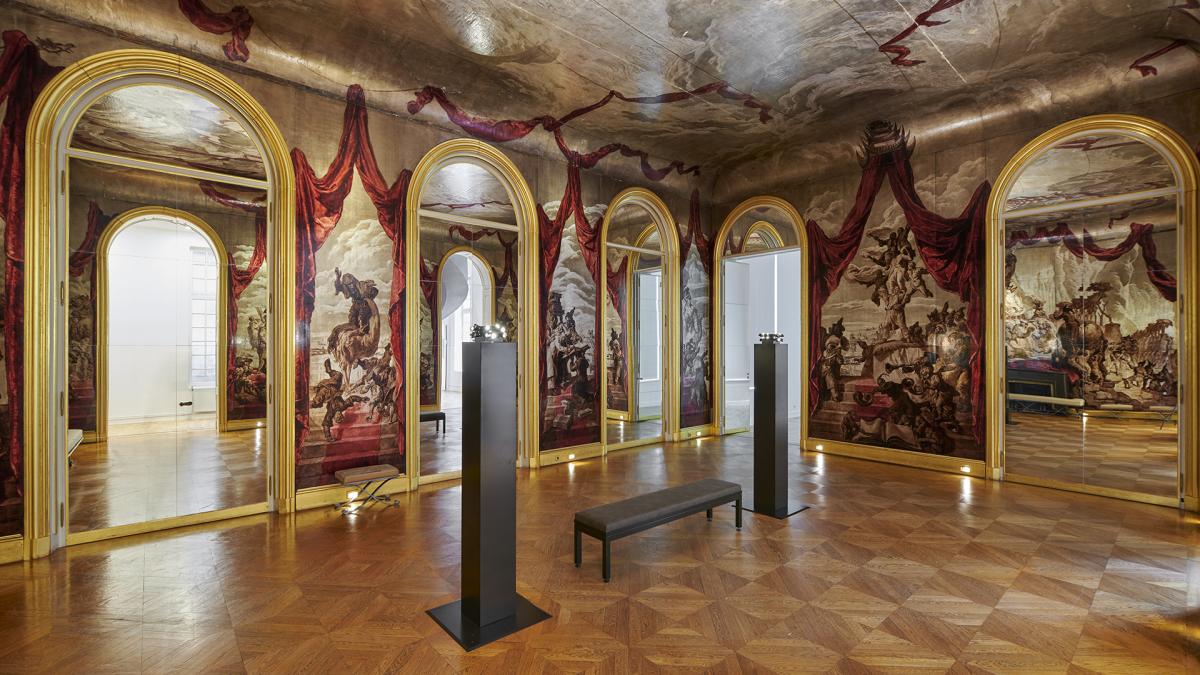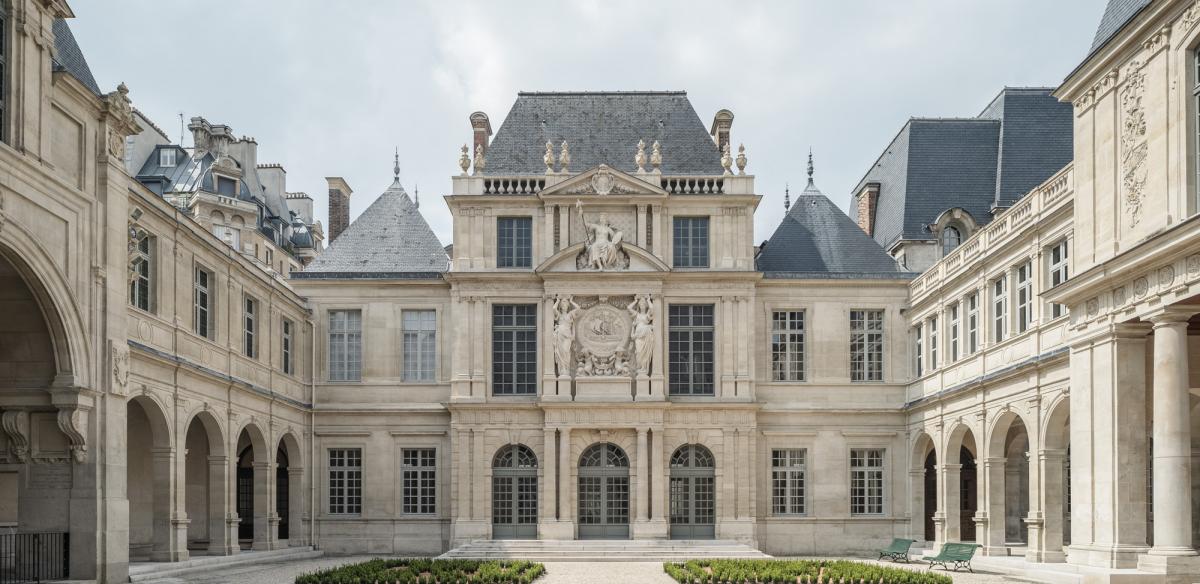The Musée Carnavalet – Histoire de Paris offers wider access to the 580,000 items from the collections of several departments, including graphic arts (drawings, prints, posters), photographs, historical and memorial objects, coins, cultural heritage archives and files on works from the museum collections.
Ground floor : Introductory Rooms & Sign Rooms
The first room is dedicated to the symbols and motto of Paris. It provides a summary of the city’s development and presents some of its major sites, personalities and events.
The second room is divided into three parts. The first part tells the story of the origin of the building and of the museum; the second gives an idea of the diversity of the museum collections and provides information on Paris; the third focuses on current news about the museum and the city, such as a work from the collection, new acquisitions or a special tribute.
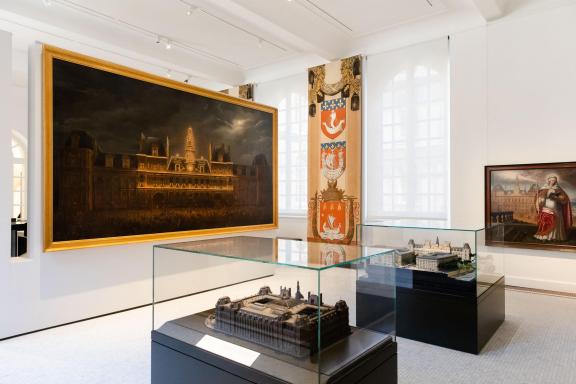
© Jean-Baptiste Gurliat / Ville de Paris
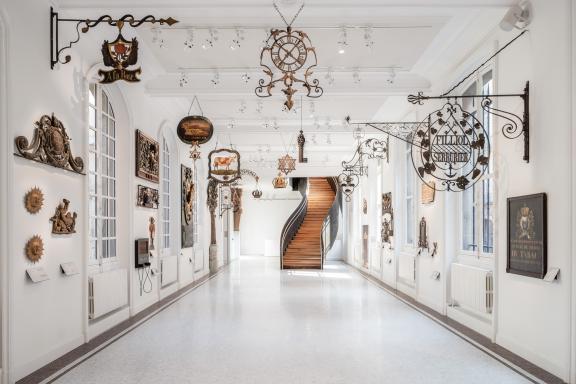
© Cyrille Weiner
Sign Rooms
Signs of the various trades formerly shaped the urban landscape. Displayed in two rooms, the museum’s major collection evokes the feeling of what it must have been like to stroll along the streets of Paris from one shop to another.
Basement : Prehistory, Antiquity and Middle Ages
Prehistory
The collections on display come from archaeological excavations that provided a key to understanding the prehistoric period in the Paris area.
The collection from the Mesolithic Era (-9000 to -5000) presented in the first room comes from diggings carried out on Rue Henri-Farman in the 15th arrondissement. They brought to light the remains of a camp of hunter-gatherers. This site for hunting expedition stopovers that lasted from a few days to a few weeks showed traces of occupation, including a hearth, animal remains and bits of flint that indicate the making of tools and weapons, in particular arrowheads.
The vestiges from the Neolithic Era (-6500 to -4500) exhibited in the second room are exceptional. They were found during diggings made in the Bercy district and enabled identifying the outlines of three buildings, a stake fence and a pontoon that evoke a village on the bank of an old Seine channel. Several oak dugouts, one of which is on display, and a yew wood bow are among the essential discoveries from these diggings, which were all added to the museum’s archaeological
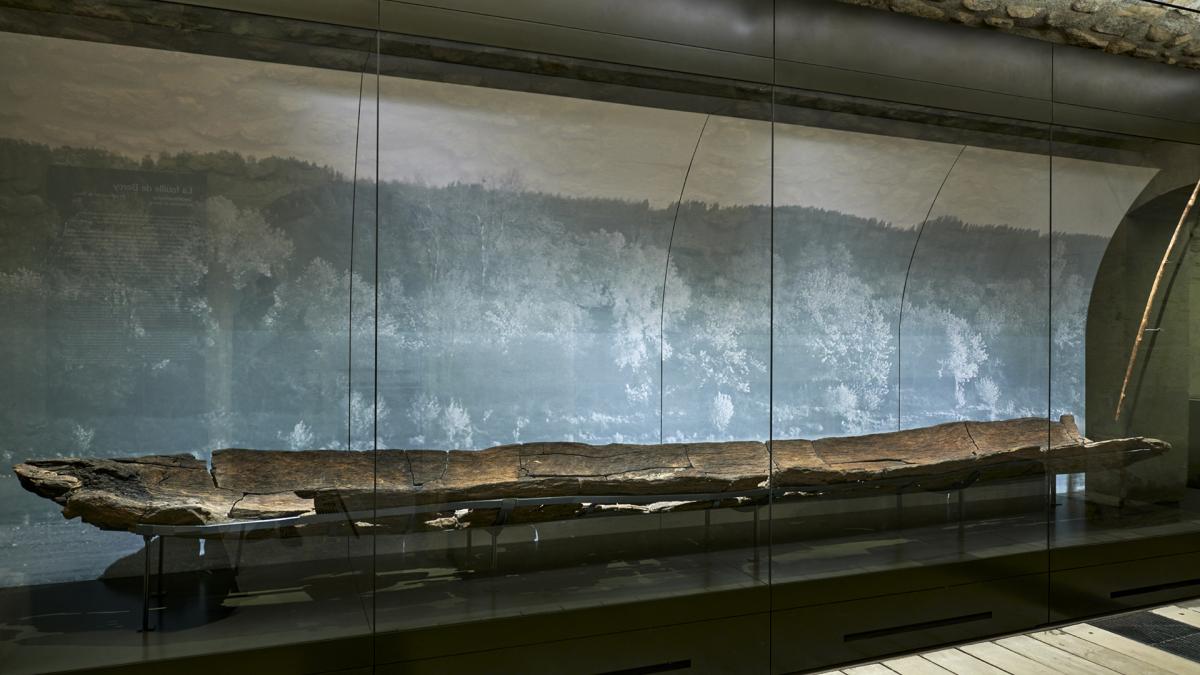
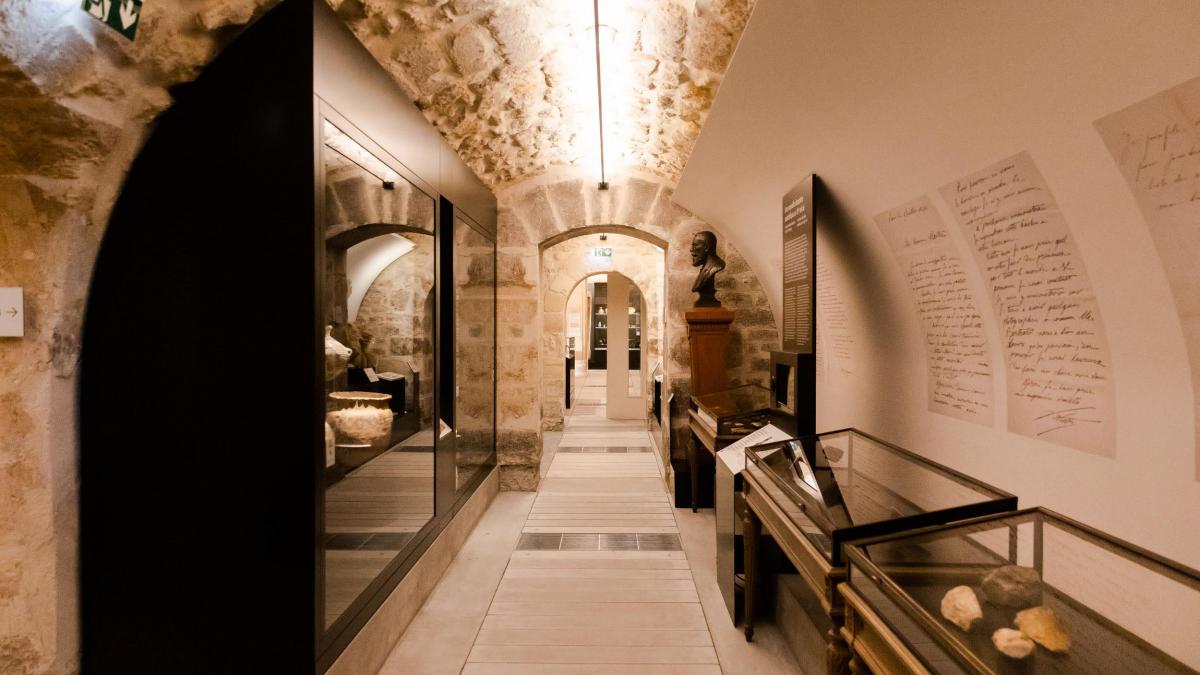
Antiquity
The first two rooms focus on the Parisii, a Gallic people that lived in the region around the third century B.C., and on their evolution, starting from the Roman conquest. Several scientific hypotheses coexist concerning the precise location of Lutetia, their main city. The museum features a number of gold coins of exceptional quality that were used by the Parisii.
After Gaul was conquered by the Romans, the Romanization of the Parisii can be observed, starting in the first century of our era. Roman representations and lifestyles were adopted without, however, erasing the Gallic culture. For example, gods and goddesses from both cultures are found together on the Pillar of the Boatmen or make up new couples, such as the Gallic goddess Rosmerta and the Roman god Mercury on display in this room.
The third room in this section presents Gallo-Roman Lutetia. The impressive sculpted stone blocks and the numerous decorative elements shown come from various public areas of the city, including the arena, the forum, the thermal baths and the aqueducts. The domestic sphere—which focuses on tableware, everyday objects and rituals and bodily hygiene—is presented in the display cases in the center of the room. Another highlight is a panel with fragments of a painted fresco; it is the backdrop for an animated projection showing what the fresco originally looked like.
Archaeological excavations carried out at worksites during the Haussmannian redesign of Paris in the second half of the 19th century unearthed several Gallo-Roman necropolises. The works in the last part of the visit layout come from a funerary context and include the bottoms of sarcophagi where the name “Paris” has been engraved for the first time, jewelry, weapons, a remarkable doctor’s kit from the third century and coins with the effigy of the emperor Julian the Apostate, who stayed in Lutetia.
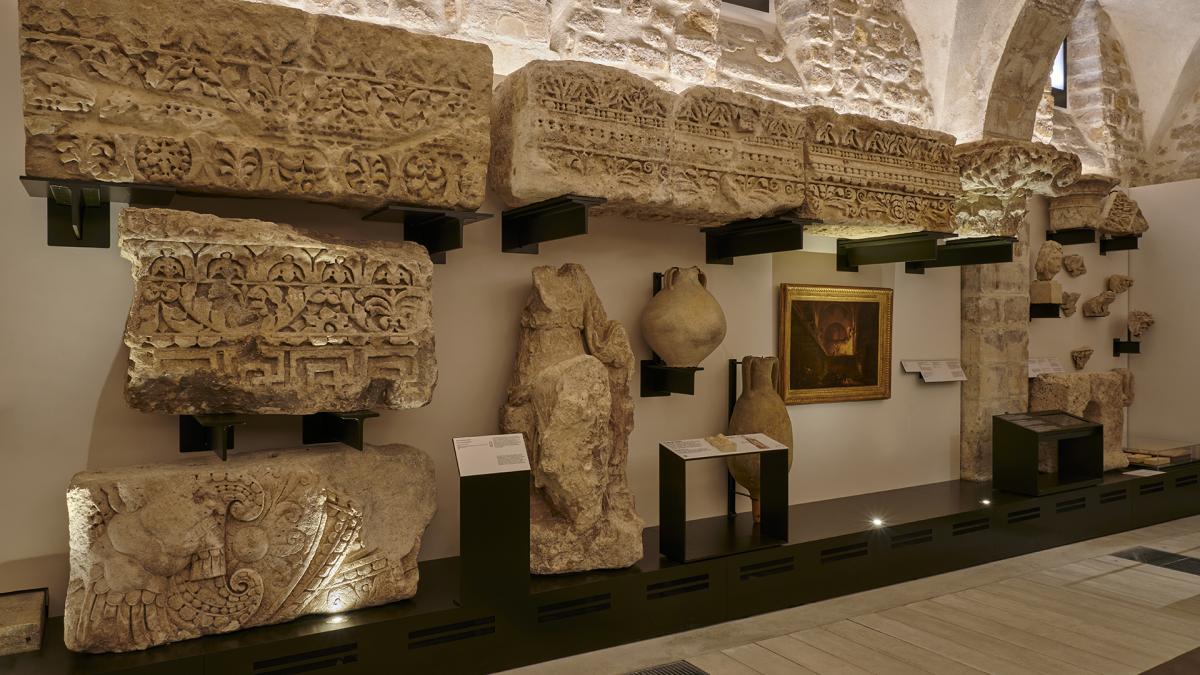
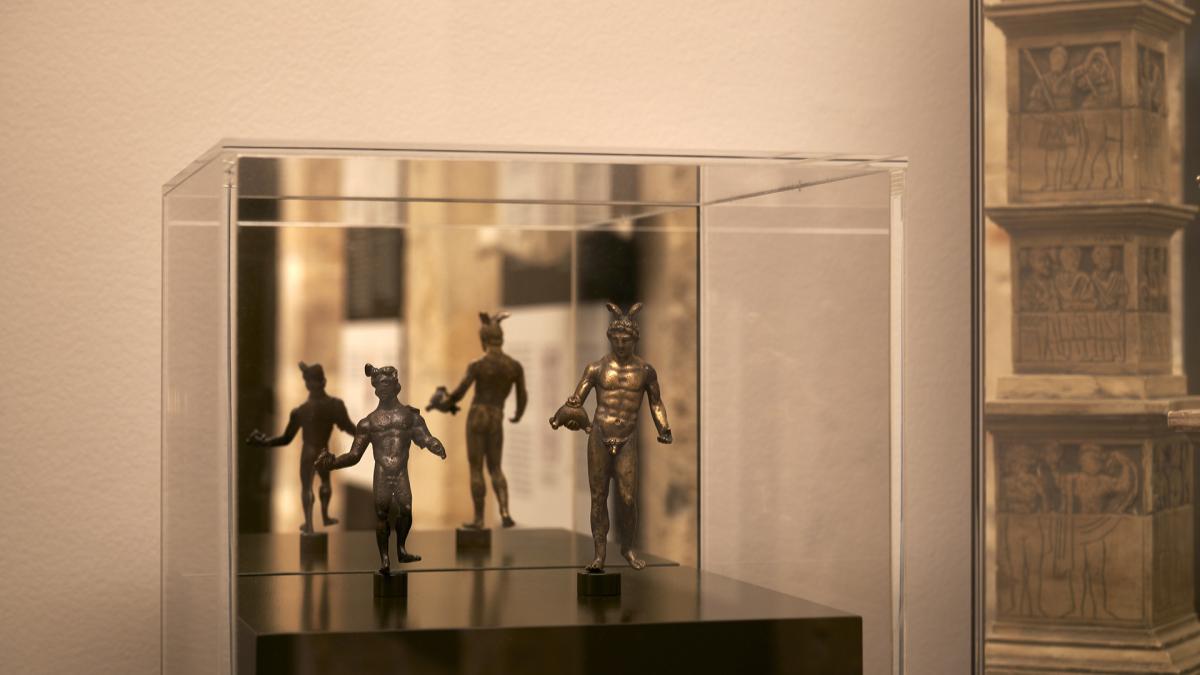
© Pierre Antoine / Paris Musées / Musée Carnavalet - Histoire de Paris
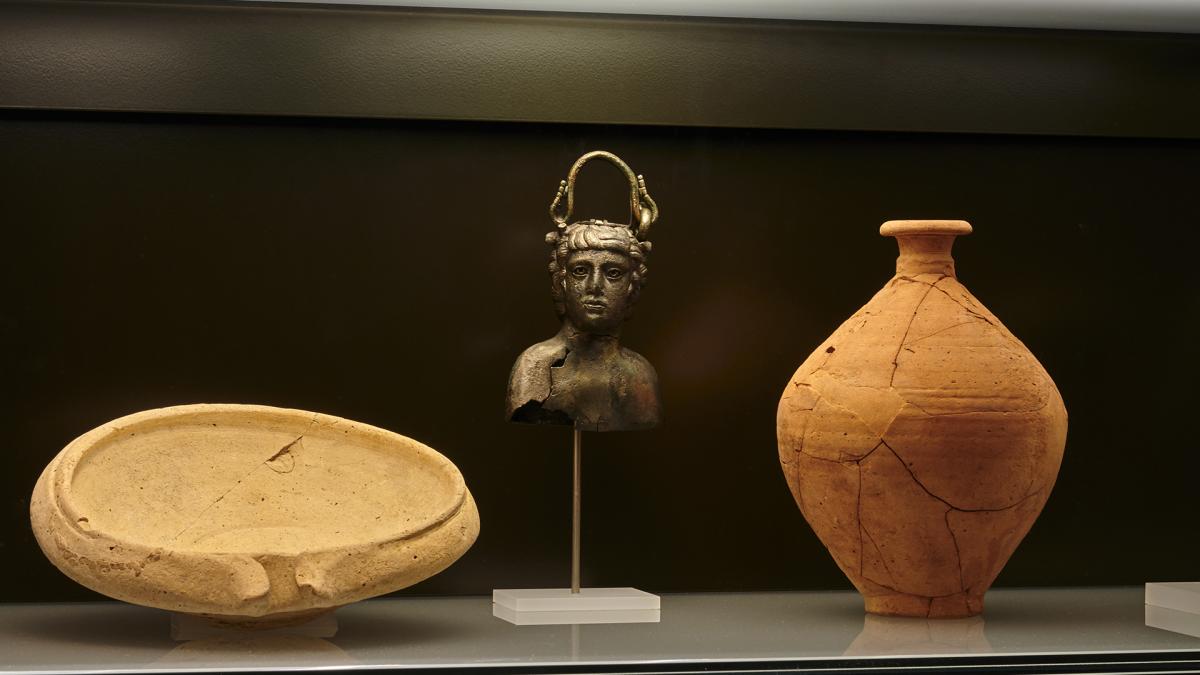
From the Middle Ages to the beginning of the 16th century
The corridor separating the Antiquity Room from the following rooms serves to introduce the Middle Ages. The link between the figure of St. Genevieve and the city of Paris is elucidated here. Visitors follow a procession carrying the relics of the city’s patron saint through the streets and enter the medieval period.
In the Middle Ages Rooms, the history of Paris is presented through works and architectural fragments from the time, as well as through later works, most notably from the 19th century, when a movement arose to defend and safeguard unique heritage items.
The first room in this section focuses on the Ile de la Cité area, which was the heart of medieval Paris and the center of political and religious power. In the middle of the room, a scale model of the island gives an idea of the urban area and its density. An exceptional gargoyle from Notre Dame Cathedral surveys the room from above. In the display case, items from archaeological diggings on Rue de Lutèce give a striking idea of daily life during this period. Most notably, they include wooden tableware and leather shoes in a very well-preserved condition.
After Ile de la Cité, the pathway leads visitors to the left bank of the Seine, which was originally located outside the medieval walls, and on to the abbey of Saint-Germain-des-Prés and the royal necropolis inside its walls. Along the way, university colleges from the era are presented, including Les Bernardins (founded in 1245), Les Prémontrés (1252), the Sorbonne (1257), Navarre (1304) and Beauvais (1370). In the Middle Ages, the University of Paris attracted from 3,000 to 4,000 students. Numerous fragments from the colleges, in particular stained glass windows, are on display.
Where were the dead buried in Paris during the Middle Ages?
Along the pathway, this question becomes the focus of a display of two Parisian cemeteries. The first is the Cemetery of the Innocents, in what is now the Halles district, which was used for seven centuries. The second is the Jewish cemetery on Rue Pierre-Sarrazin, bearing witness to the large Jewish community in Paris in the 12th and 13th centuries.
The last part of this section is devoted to the organization of city administration during the reigns of Philippe Auguste (1180-1223) and Louis IX (1226-1270). Paris was becoming a municipality. Power was divided among a number of different players, including landholding lords, the king’s provost, the provost of the bourgeois merchants and the aldermen. The section ends with Francis I, who ordered City Hall to be built in 1533 at its current location.
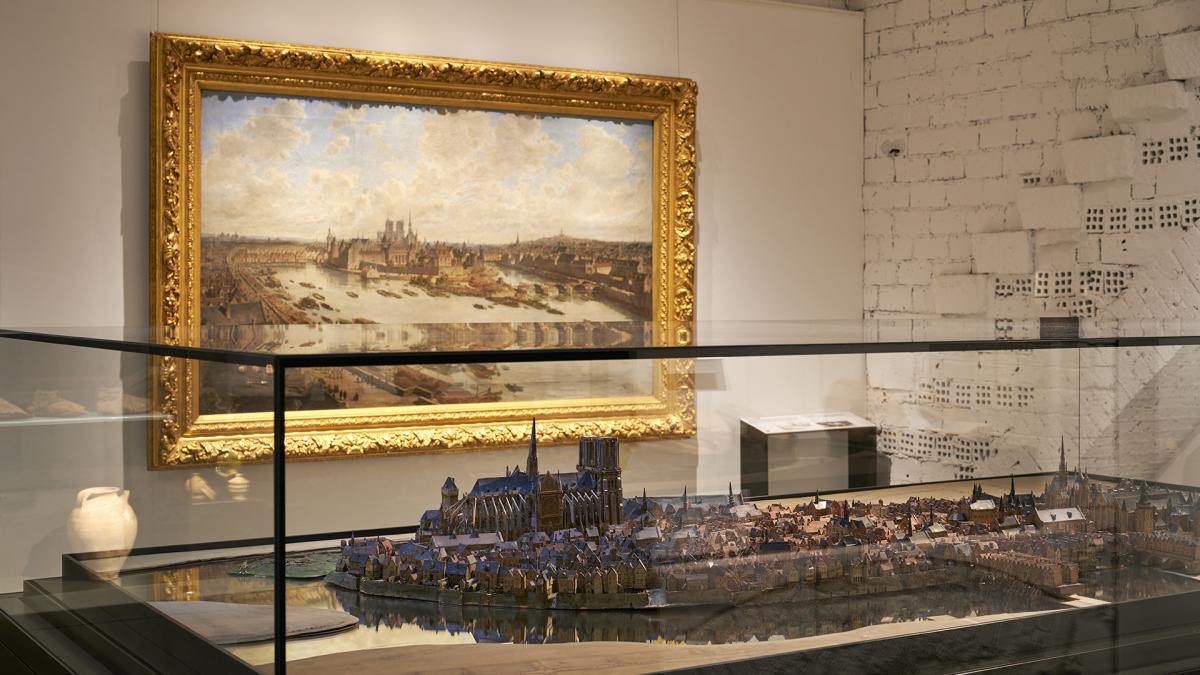
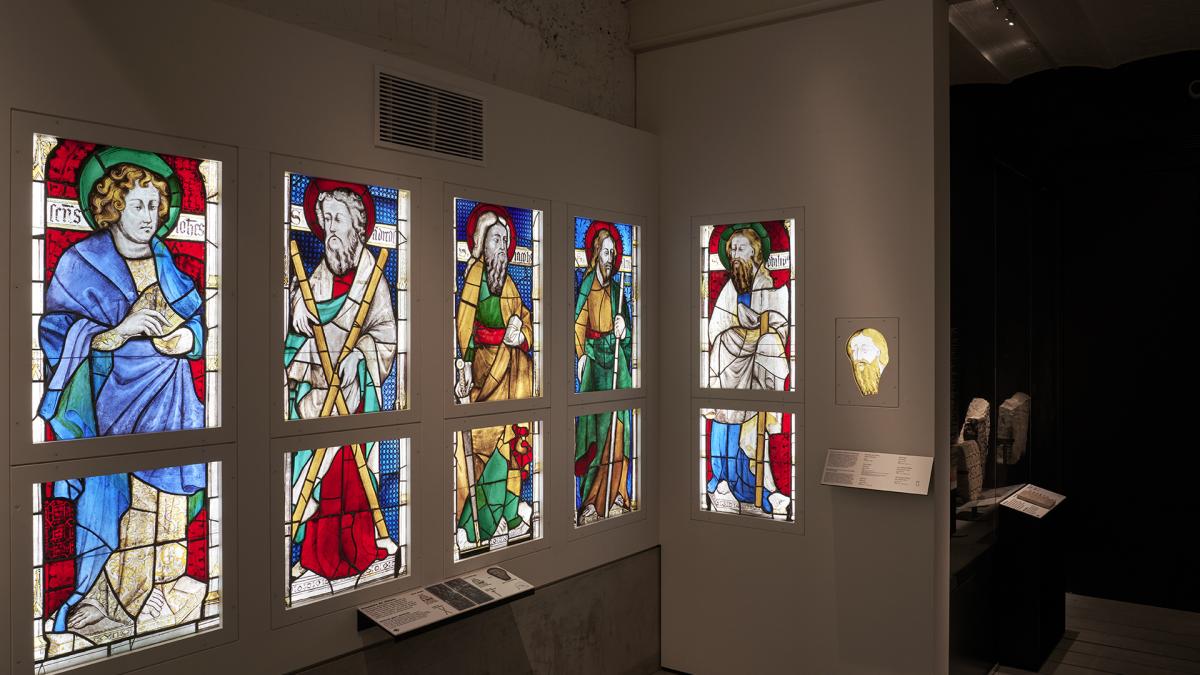
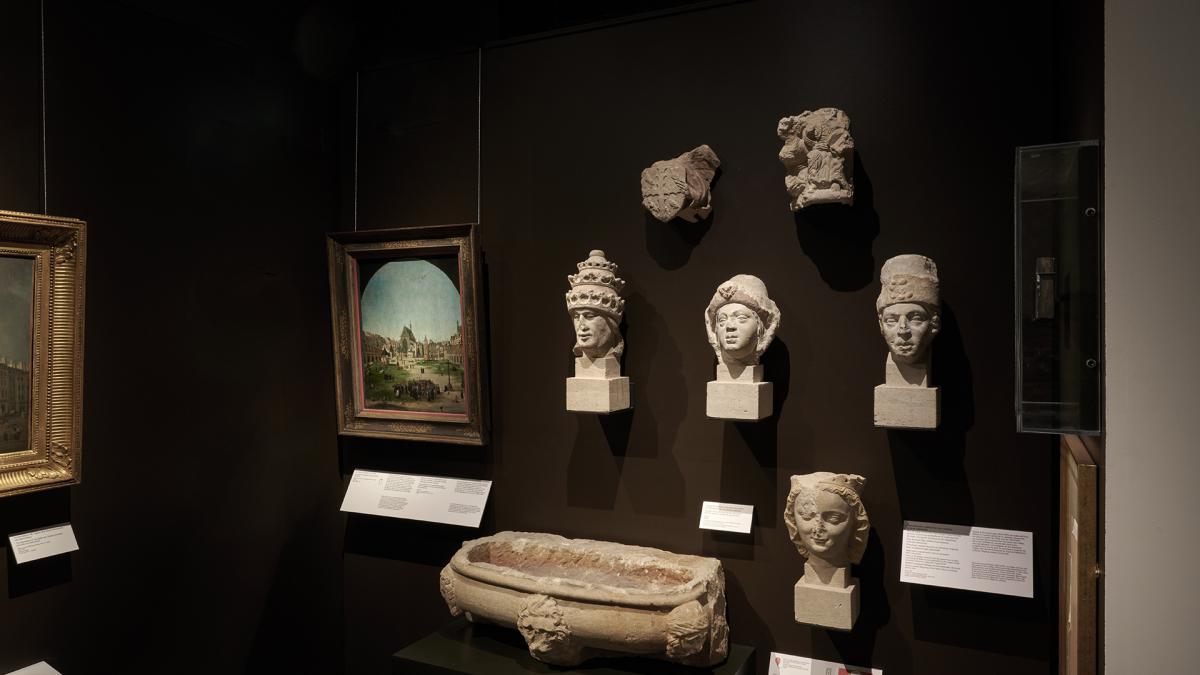
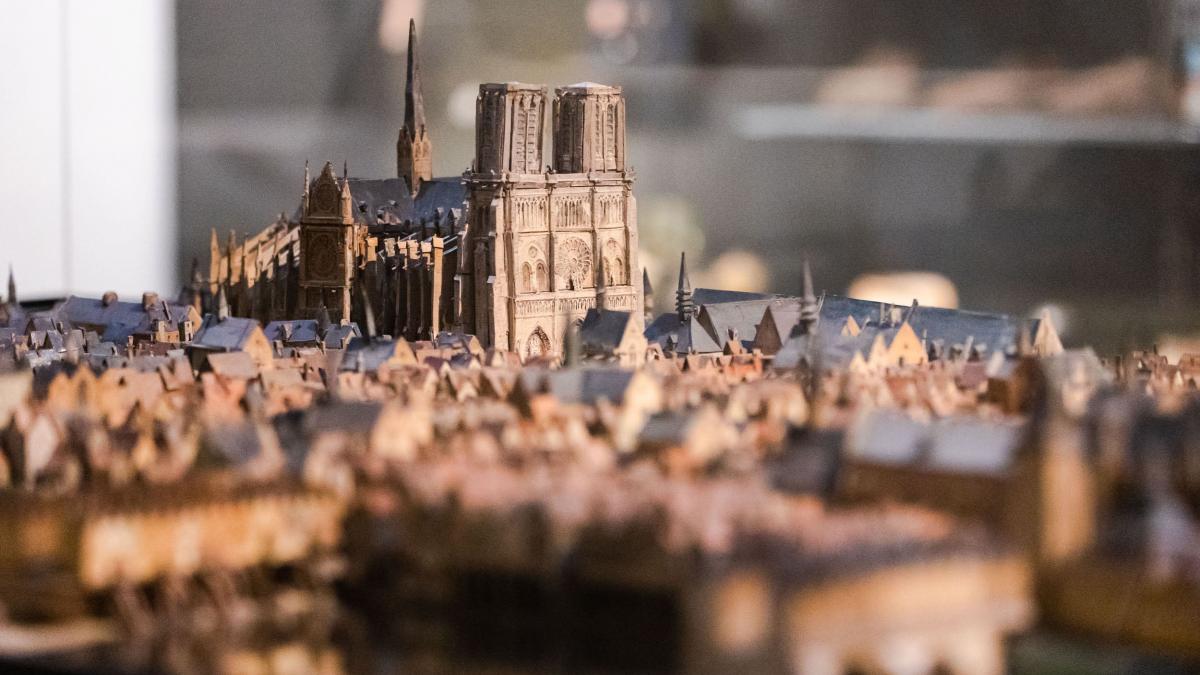
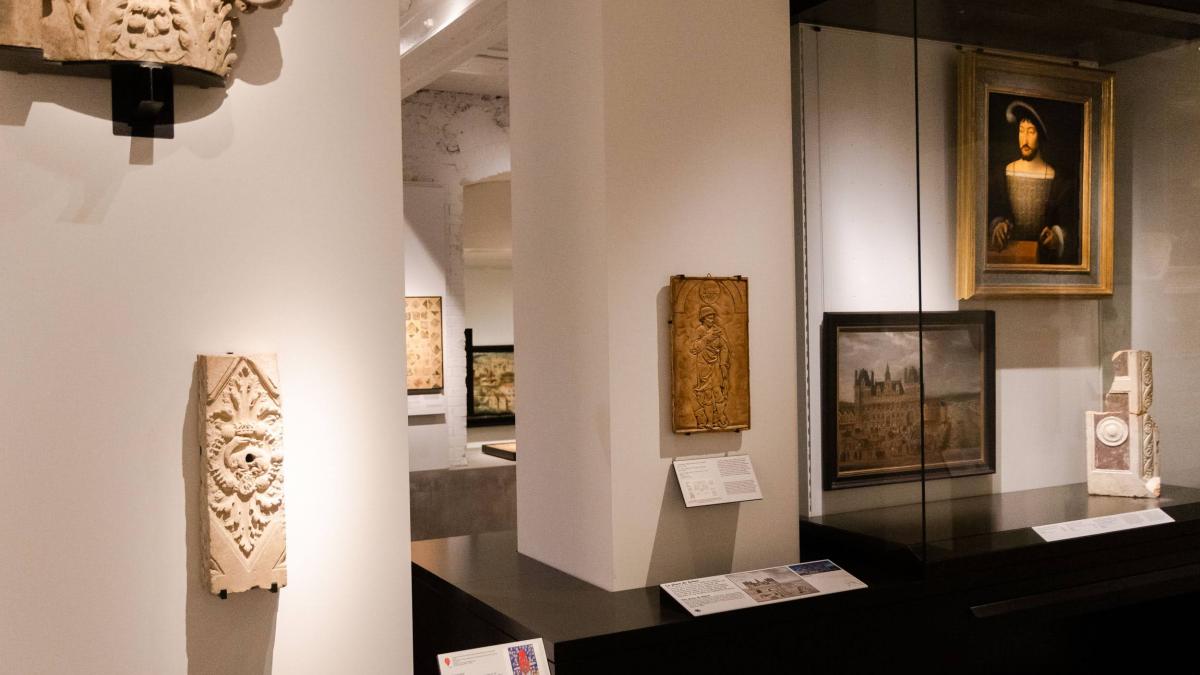
First Floor : mid-16th century to late 18th century
Mid 16th century to 17th century
Three rooms focus on religious, political, administrative and economic history from the reigns of Henry II and Catherine de Medicis to Louis XIV.
Next comes a gallery dedicated to the major urban transformations of the capital during the same period, from Henry IV to Louis XIV. The Paris area changed markedly with the creation of Place Dauphine and Pont-Neuf, as well as with the development of Place Royale, what is now Place des Vosges, Place des Victoires and what is now Place Vendôme.
In the following three rooms, magnificent settings from the 17th century—the Colbert de Villacerf salon and the two La Rivière salons painted by Charles Le Brun—put the manual arts on display.
A key figure of intellectual life in the 17th century, Madame de Sévigné contributed to the influence of the capital. In three rooms, visitors will discover, among other items, a portrait of the famous letter-writer and the writing desk she used to pen the famous letters she sent to her daughter. La Fontaine, Corneille and Molière were her contemporaries.
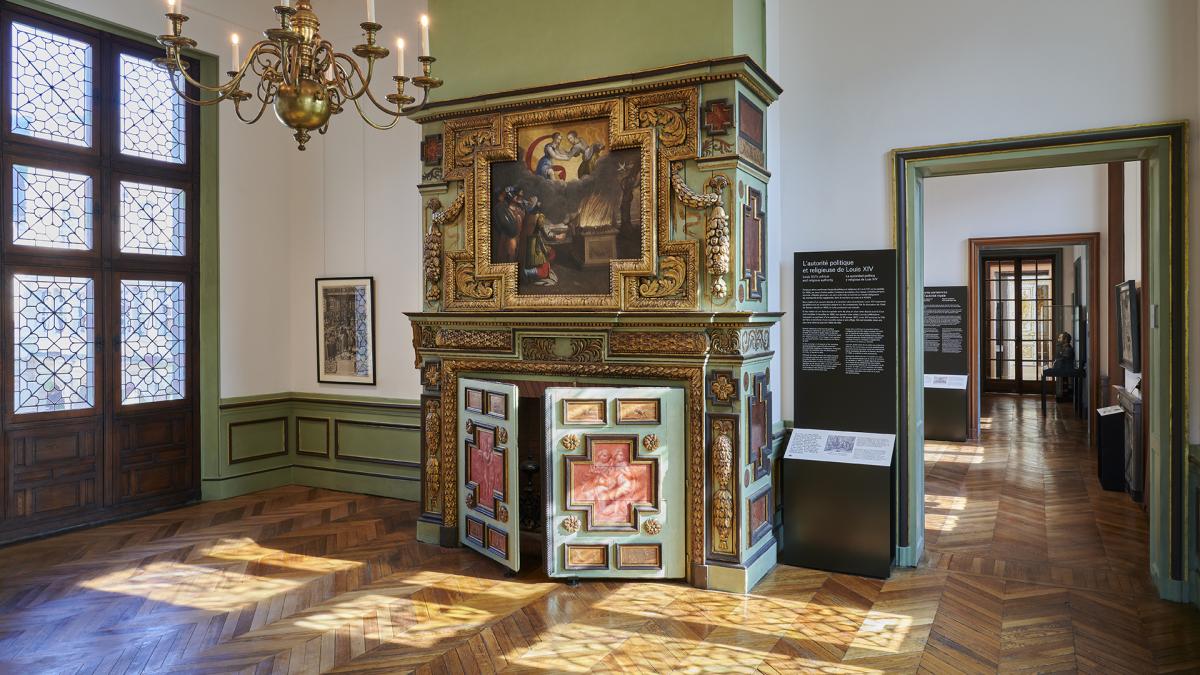
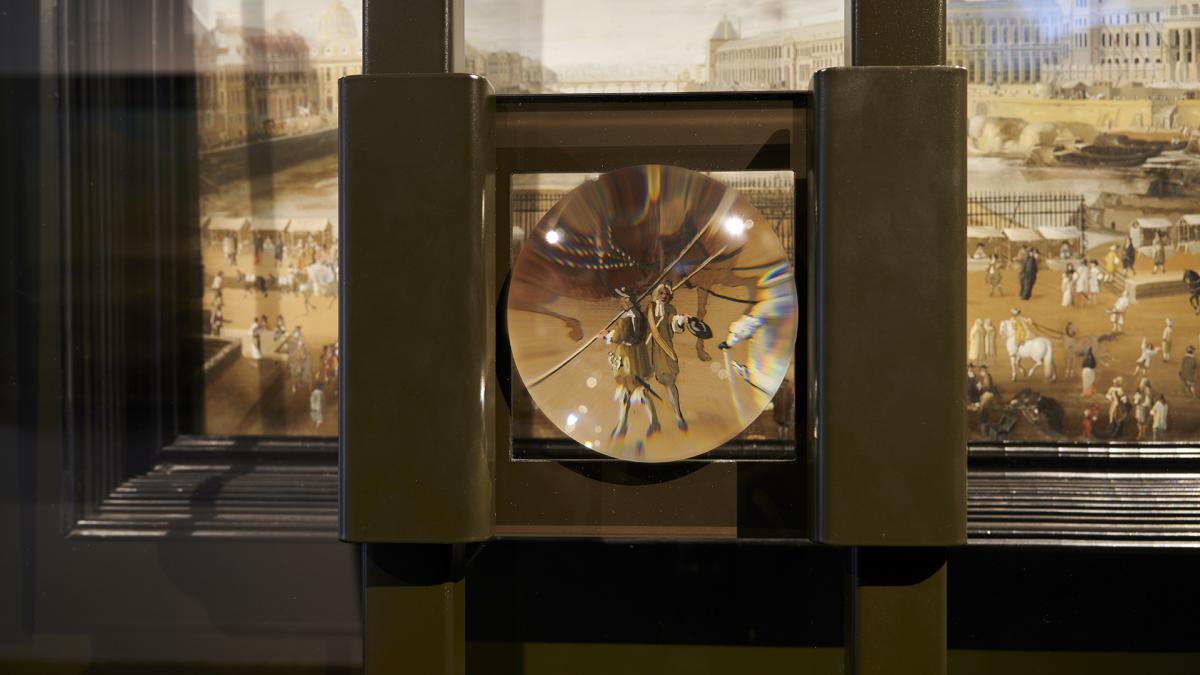
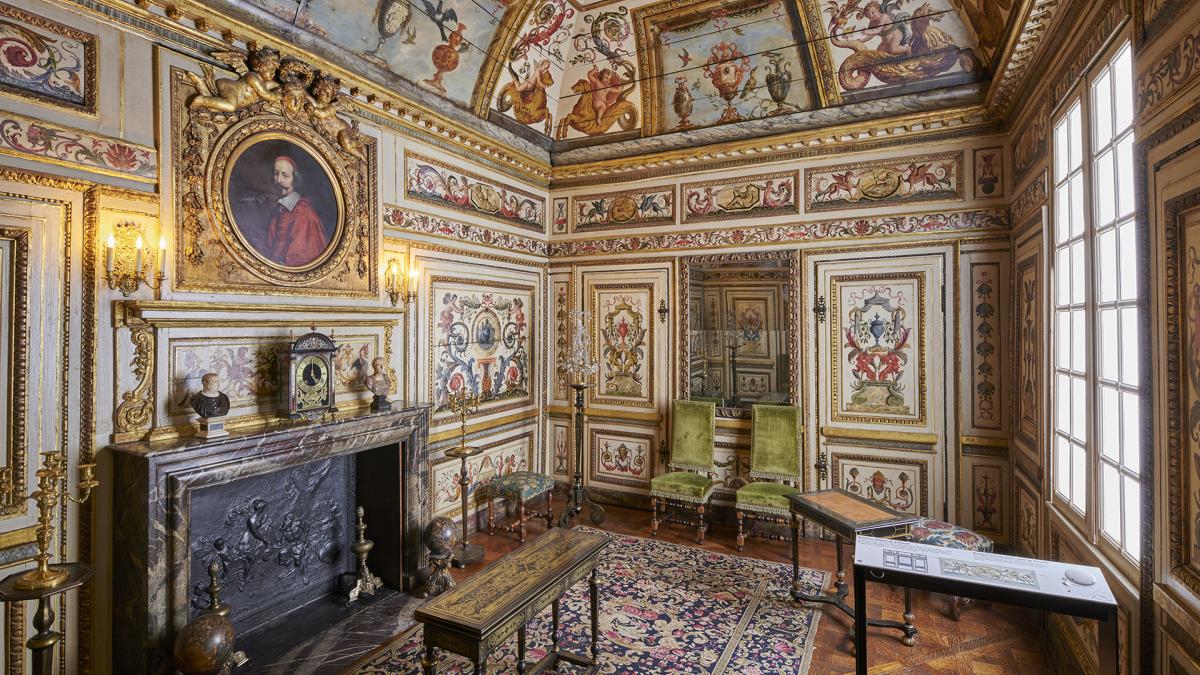
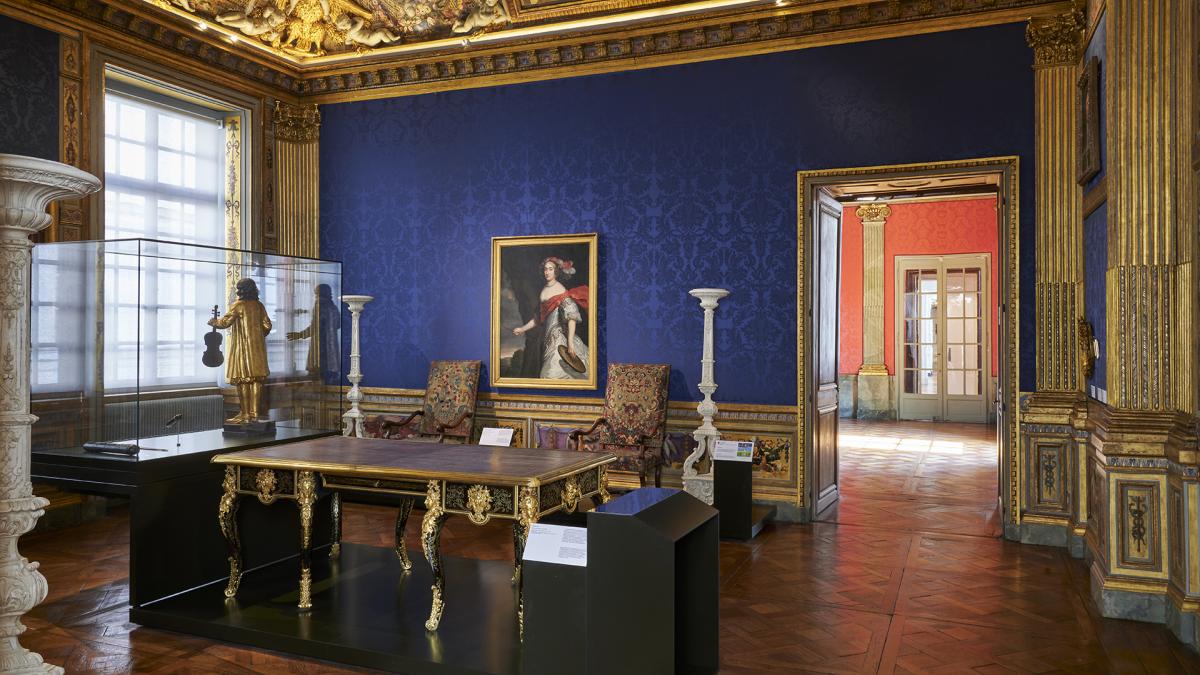
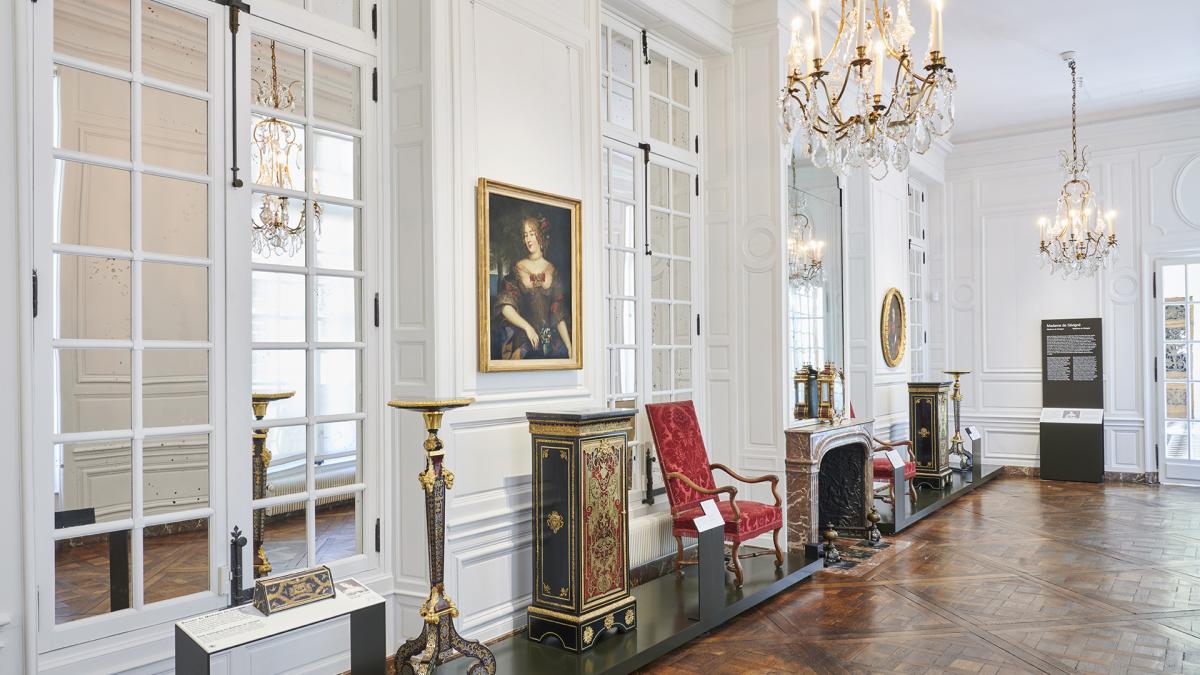
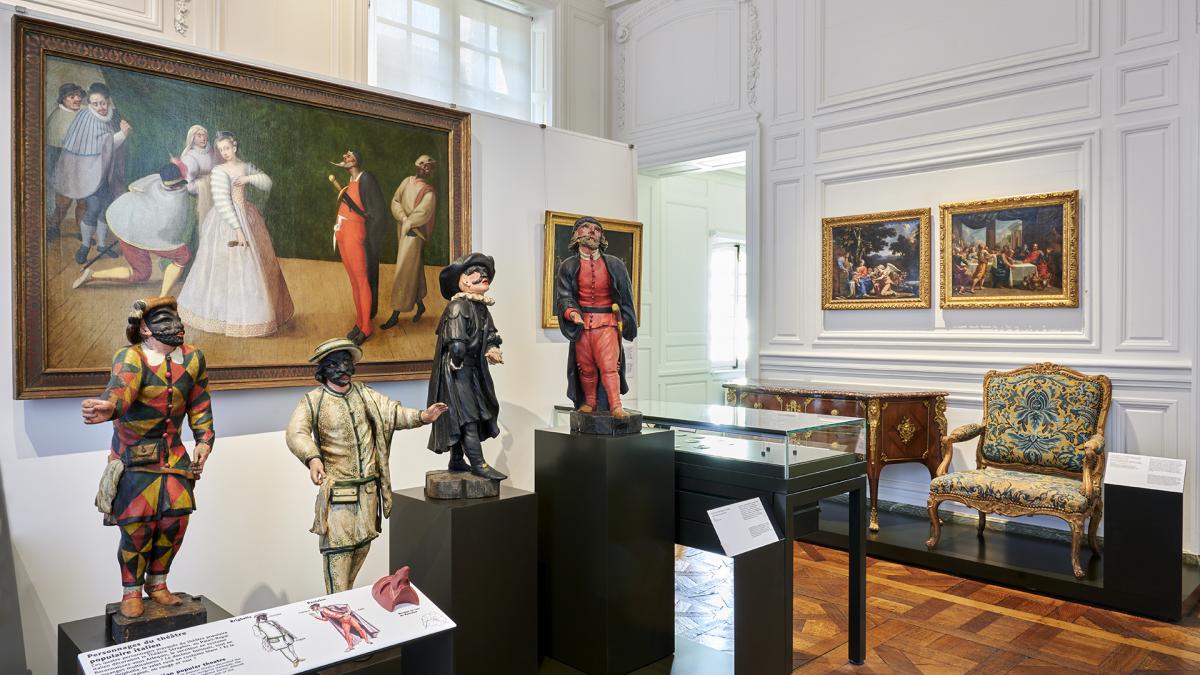
18th Century
After a salon decorated in a style inspired by the Far East, a room is dedicated to the Regency and the start of the reign of Louis XV. When Louis XIV died in 1715, Louis XV was too young to reign, and a regency was established until 1723. Versailles was no longer the place of residence of royal power. Political, administrative and economic decisions were made in the capital.
The years from 1730 to 1750 are presented in six period rooms, known as the “Bouvier Rooms” in compliance with the provisions of a major donation from a Parisian antiques dealer. The furnishings and decorative objects shown in the rooms reflect the lifestyle of privileged social groups. Each room bears witness to the creativity and quality of Parisian craftsmanship in the 18th century, which is enriched by the history of the districts where artisans had installed themselves. Cabinet makers, joiners, sculptors, watchmakers, bronzesmiths, casters and gilders transmitted their unique know-how over several generations. The dwellings of well-to-do Parisians were transformed. A new type of furnishings—lighter and more varied—came into being. Tableware, goldsmithing, ceramics and glassmaking convey extreme refinement.
Parisian interiors from the second half of the 18th century are presented in a succession of four “Breteuil Rooms”. They are followed by three rooms focusing on the unbuilt areas of the capital during this time. First, there was the Jardin des Plantes, which was a place for scientific study. Next came the follies and picturesque gardens created in and around the city. Finally, areas for outdoor spectacles allowed people to gather and watch events such as the ascension of a hot-air balloon or a display of fireworks.
The developments and beautification of Paris carried out in the reigns of Louis XV and Louis XVI are presented in the three “Conflans Rooms”.
After this, the pathway continues with a focus on architect Nicolas Ledoux.
First comes the Café Militaire, which was opened in 1762 for officers only (lien incontournable) and was located on Rue Saint-Honoré. Its decoration was entrusted to a young and yet unknown architect, Claude-Nicolas Ledoux. On each side of the four panels displayed, bundles of pikes and helmets provide a framework for decorations made of trophies representing Athena’s shield with the head of Medusa, the club of Hercules, the pelt of the Nemean lion and Jupiter’s thunderbolts, evoking strength, generosity, speed and invincibility.
Next is the drawing room from the Uzès Mansion (lien incontournable). In 1768, the Duke of Uzès commissioned Claude-Nicolas Ledoux to carry out a major renovation. The architect was also responsible for decorating the drawing room, which was lighted by two French doors opening on the garden. The setting features a rhythmic alternation of four mirrors, four double doors and six large carved panels of trophies of arms attached to laurels. The doors display the four parts of the world according to the iconography of Cesare Ripa, a Renaissance author: the alligator evokes America, the dromedary Africa, the elephant Asia and the horse Europe.
The last part of the pathway focuses on the intellectual impact of Paris during the Enlightenment and the main figures of this epoch. On opposite sides of the Luynes landing, the Encyclopedists Denis Diderot and jean Le Rond d’Alembert face the philosophers Voltaire and Jean-Jacques Rousseau. Several objects that belonged to them or their effigies are presented, providing an indication of their great popularity. In the next room, exchanges between France and the United States concerning America’s conquest of independence are on display under the tutelary figure of Benjamin Franklin.
The section ends with Pierre-Augustin Caron de Beaumarchais, another ardent defender of freedom of expression, whose writings prefigured the French Revolution.
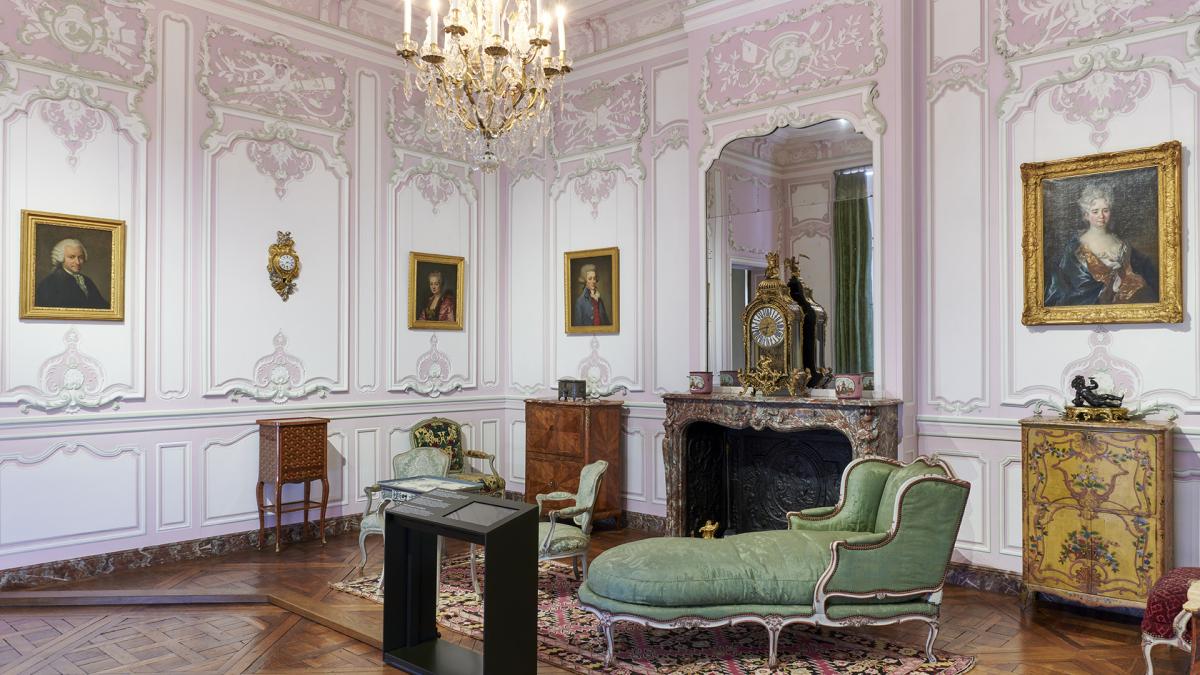
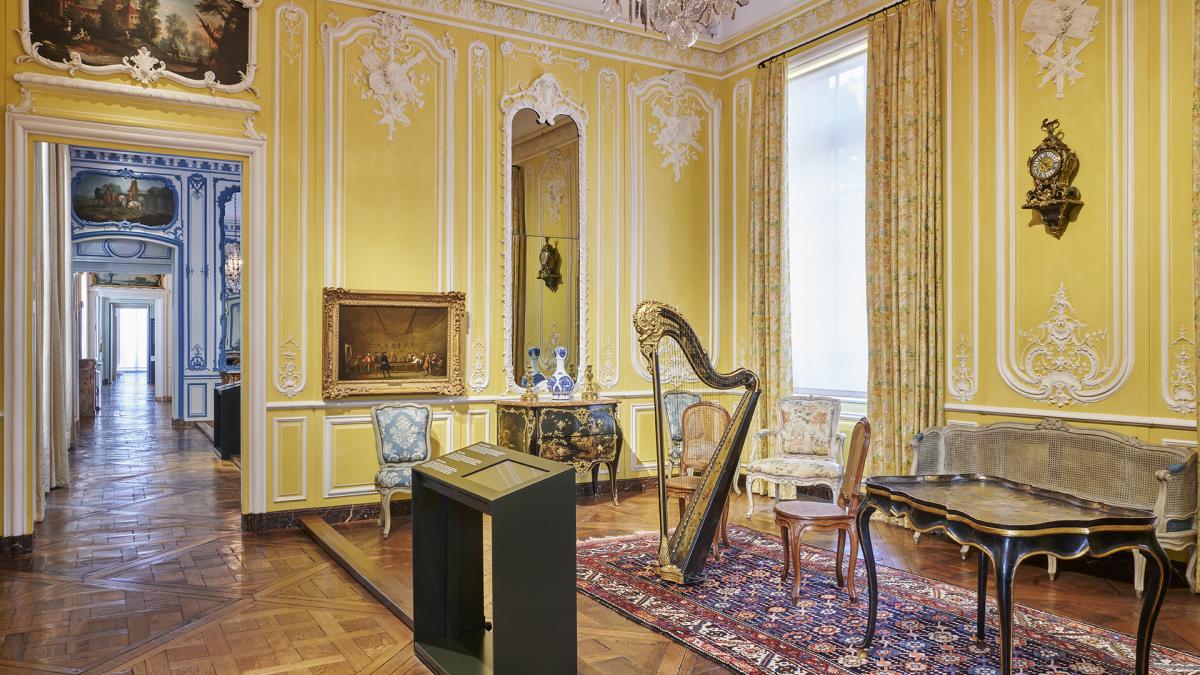
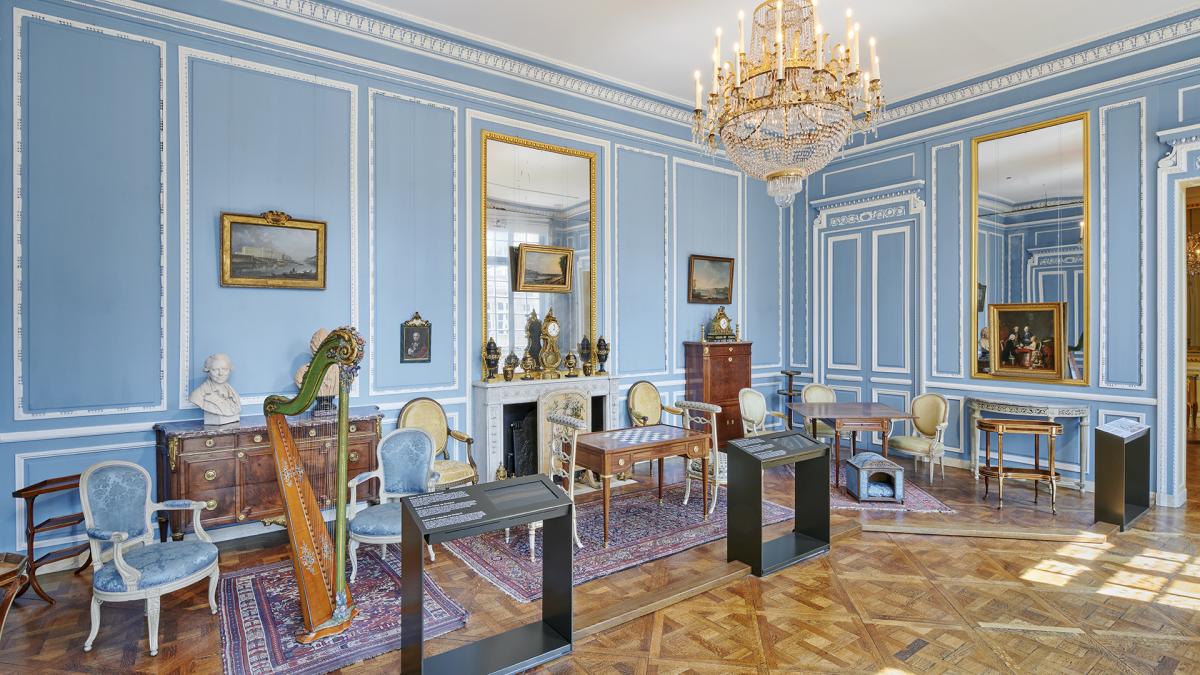

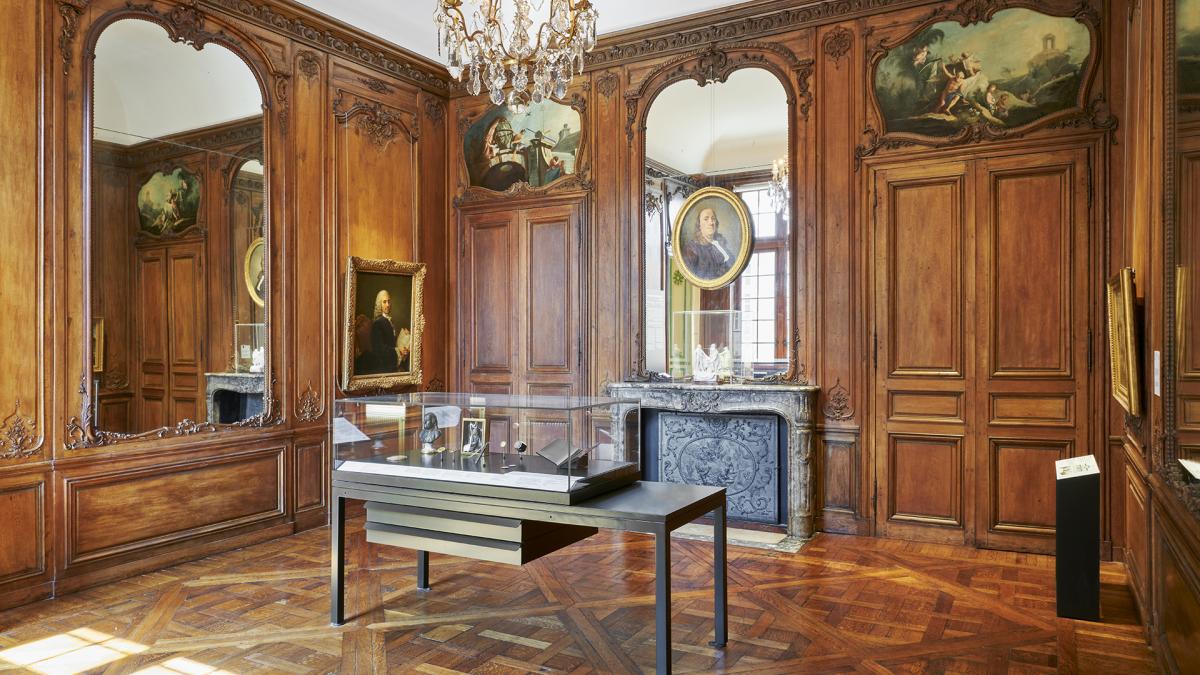
Level 2 : The French Revolution and the early 19th century
The French Revolution
The museum houses the world’s largest collection of art works and historical objects from the years 1789 to 1799. In this section, the display draws on the collections to provide a visual and material chronicle of ten exceptional years for Paris and for France. Paintings, drawings, sculptures, furnishings, ceramics, medals, accessories and objects tell the story of a unique period that is deeply anchored in history and in the collective memory.
The pathway starts with the painting of the Declaration of the Rights of Man and of the Citizen, which was given to the museum by Georges Clemenceau. Approved on August 26, 1789, by the National Constituent Assembly, the Declaration provided the basis for new political aspirations. The monarchical regime was not called into question during the first years of the Revolution.
The Estates General
Paris counted about 600,000 inhabitants. Affected by the economic crisis, many Parisians mobilized themselves. Riots broke out. Necker, the Minister of Finance, remained popular. Louis XVI convoked the Estates General. In this section with a display case in the center of the room, visitors will discover the king’s speech for the opening of the Estates General on May 5, 1789, which is printed on a silk background. Facing it, the sculpted busts of the deputies Mirabeau and Barnave evoke the numerous orators who participated in the Constituent Assembly. Visitors can take a seat and listen to excerpts from a number of seminal speeches.
On the opposite side, along with other works, is an engraving representing the Three Estates as well as a bust of Jacques-Guillaume Thouret. This deputy from Rouen had encouraged the creation of the French departments. On the right, note the medallion with a drawing of the newly created Seine department.
On the wall a sketch of the Tennis Court Oath faces these items, which are inside a display case.
The Storming of the Bastille on July 14, 1789
This part of the pathway gives detailed information on each day, from July 12 to July 14, 1789, when the Bastille was stormed, as well as on the role of the eastern Paris suburbs.
The famous painting of the fortress by Hubert Robert hangs in the center of the area. Facing it, a display case contains a number of objects from the Bastille, such as keys, handcuffs or fragments of the building. Stone blocks from the site were sculpted and marked. Jean-Baptiste Palloy, who was in charge of demolition, made many items commemorating the event from the demolition stones.
In a display case at the center of the room is a monumental heater in the shape of the Bastille. Made by the Olivier manufactory, it was installed in 1792 at the National Convention in the Carousel Room of the Tuileries. This impressive representation made three years after the Storming of the Bastille conveys the impact of the event during and after the Revolutionary period.
Summer and Fall 1789
Here, the display presents the implementation of a new municipal power in Paris. In July 1789, for the first time, administration of the capital was entrusted to an elected mayor and a General Assembly of elected representatives from the community. The Paris National Guard was created to ensure safety in the city. It was headed by La Fayette, who followed orders from the municipality.
A bust of the first mayor of Paris, Jean-Sylvain Bailly, opens this part. Facing the bust, a map of Paris shows the new administrative partitioning into 48 sections that was introduced in May 1790.
A display case focuses on two major dates. The first is the night of August 4-5, 1789, during which the deputies voted for the abolition of the institutions and privileges of the Ancien Régime. The second is October 5-6, 1789, two days that mark the arrival of the king and his family at the Tuileries Palace. They had left Versailles and would never return.
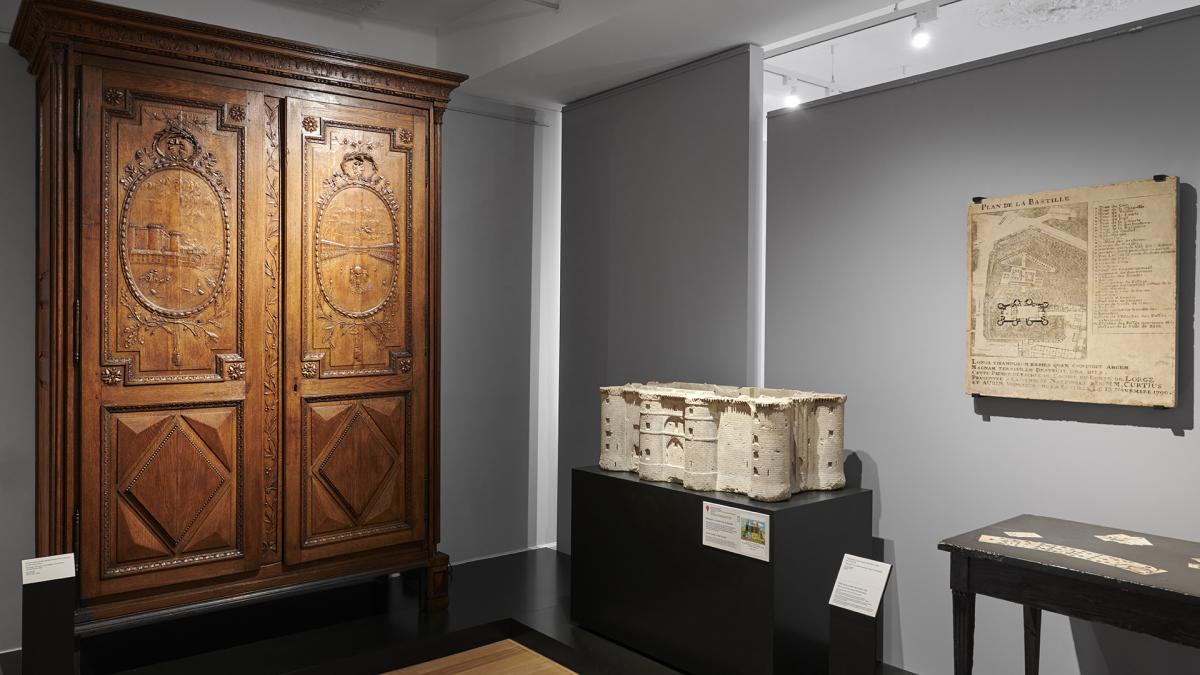
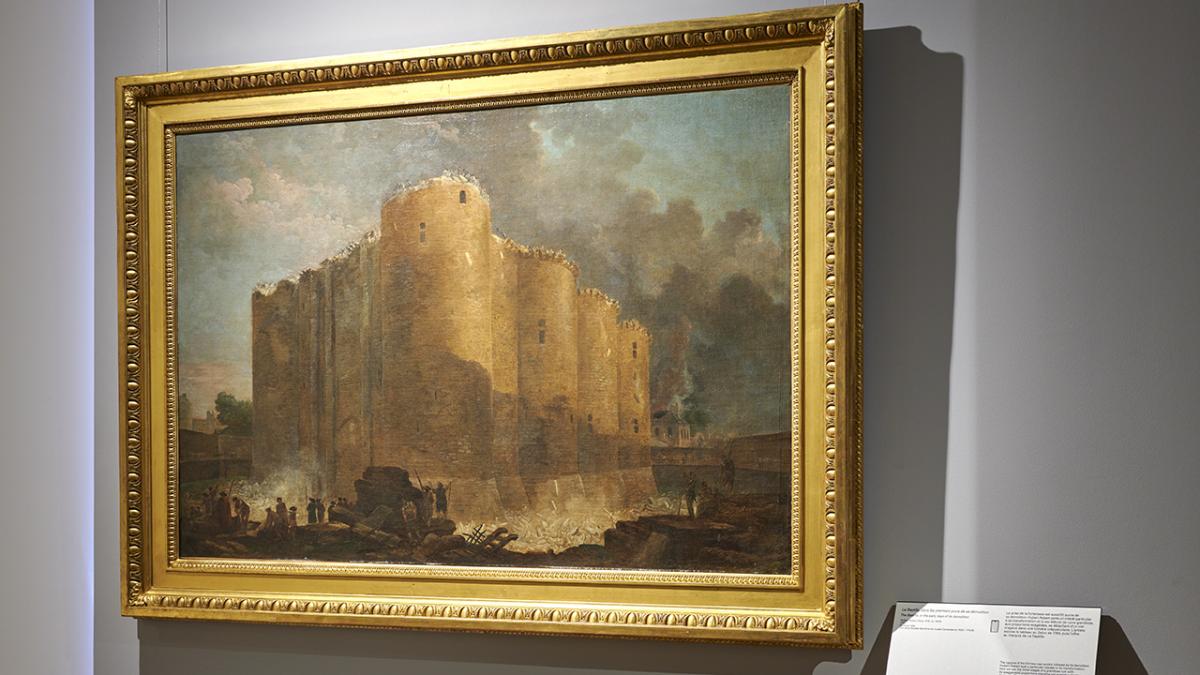
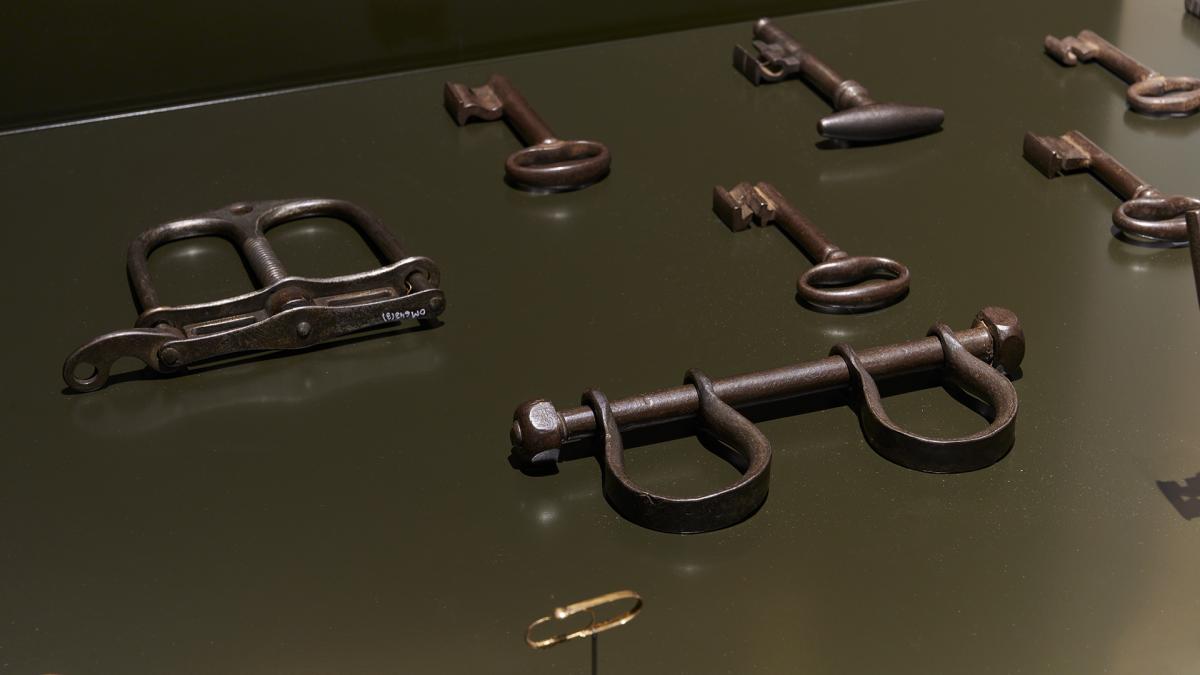
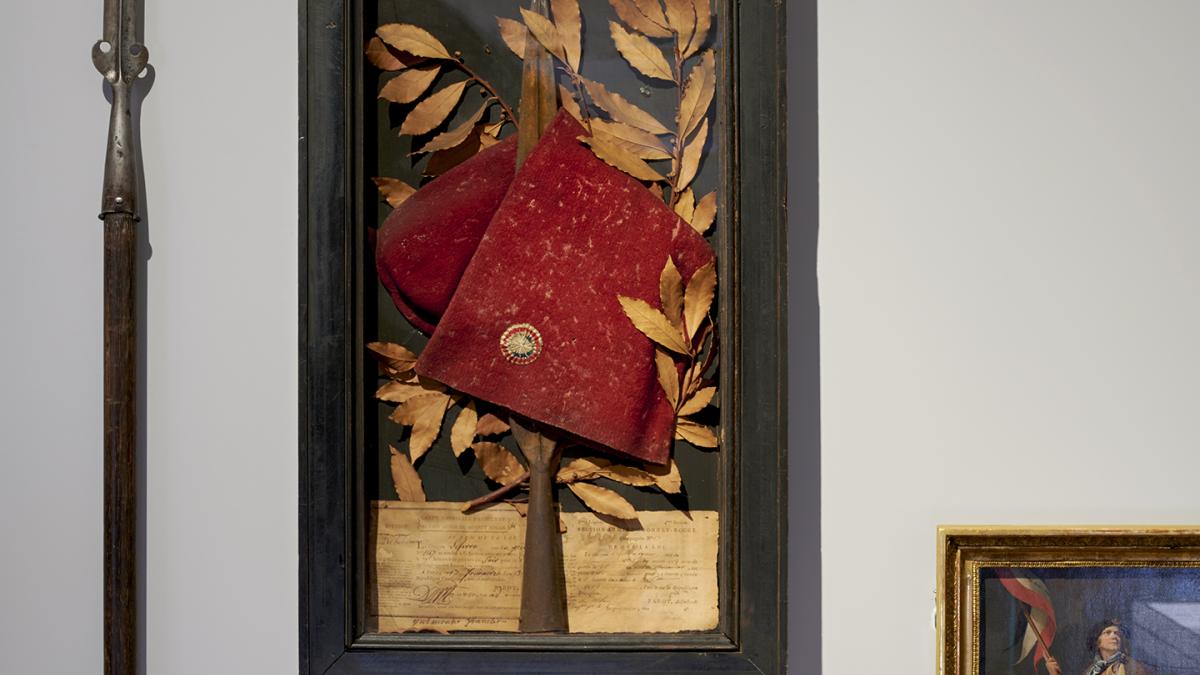
The Festival of the Federation on July 14, 1790
The Festival of the Federation, a grandiose national ceremony, was held on the Champ-de-Mars on July 14, 1790. Its purpose was to create a setting where the French and the king could demonstrate their adhesion to the constitutional project. An immense crowd swore an oath to “the nation, the law and the king”. However, serious tensions still existed.
The large painting of this event by Charles Thévenin is placed between two windows opposite a seat. This arrangement allows stopping for a moment and immersing oneself in the ceremony. A soundtrack with excerpts from Gossec’s Te Deum and the popular song Ah! ça ira (It’ll Be Fine) give an idea of this intense commemoration of the first anniversary of the Storming of the Bastille.
On one side of the room in a display case, visitors will find several objects associated to the event, such as a woman’s slipper, a fan and several miniatures. These bear witness to the popular jubilation that characterized the day.
Revolutionary iconography flourished and found an echo in the decorative arts. In the center of the area, a chest of drawers, a two-part wardrobe and panels covered in Toile de Jouy cloth share this ornamental repertoire.
From 1791 to 1792
During the night of June 20-21, 1791, Louis XVI and his family attempted to flee. Intercepted at Varennes, they were brought back to Paris, where the atmosphere was tense. Inside a wall clock, a coin that the king was said to have in his pocket when he was arrested is displayed. Above it is a wooden plaque, hinting at the instantaneous dissemination of the event. After the king’s flight, the majority of deputies chose the compromise of a constitutional monarchy. On September 14, 1791, the king swore an oath to the constitution.
The wearing of signs of recognition and the spread of symbols were everywhere. In 1791, Voltaire’s ashes entered the Pantheon. A display case focuses on this first pantheonization and features a magnificent worked belt that was worn by a little girl who followed the cortege.
The last display case in this room concerns the storming of the Tuileries on August 10, 1792. Several of the historical and memorial items shown bear witness to this major event of the French Revolution. They include Marie Antoinette’s slipper, which one of the insurrectionists had taken, a small milk pitcher found in the room of Louis XVI, the last order given by the king to Colonel Dürler, Commander of the Swiss Guards, and an embroidered fleur de lis.
Royal powers were suspended and a new Assembly was elected by universal male suffrage. On September 21, 1792, the National Convention decided to abolish the monarchy. On the following day, France became a de facto republic
Fall of the Monarchy and Fate of the Royal Family (1792-1793)
What happened to the royal family after the Tuileries insurrection?
On August 13, 1792, the king and his family were imprisoned in the Temple. After a trial, Louis XVI was condemned to death and executed on January 21, 1793; Marie Antoinette was executed on October 16 after being transferred to the Conciergerie in August. The dauphin died in the Temple prison on June 8, 1795.
This room is divided into two parts. On the right are tables, armchairs, chairs, a bed, toiletry items, the dauphin’s games and a small lantern that show what life was like for the royal family in the Temple prison. The projection of various wallpapers from the Temple suggests how the walls were decorated in the rooms where the family were prisoners.
On the left, a display case focuses on relics of the royal family that were collected or produced during the 19th century.
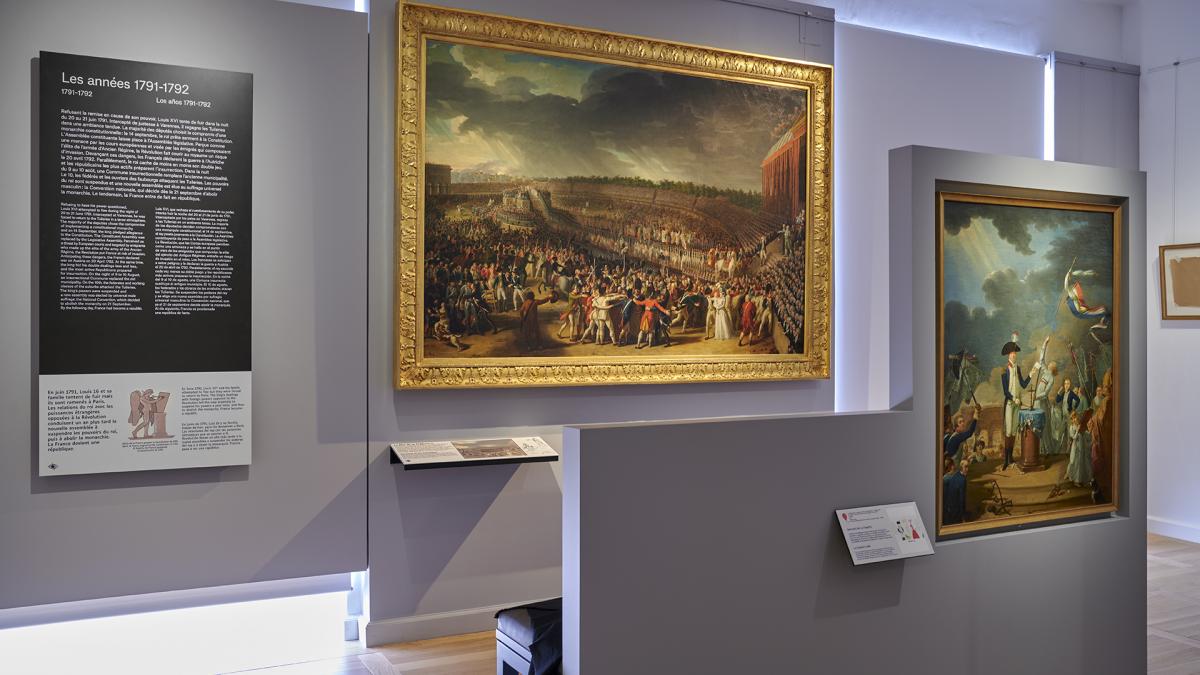
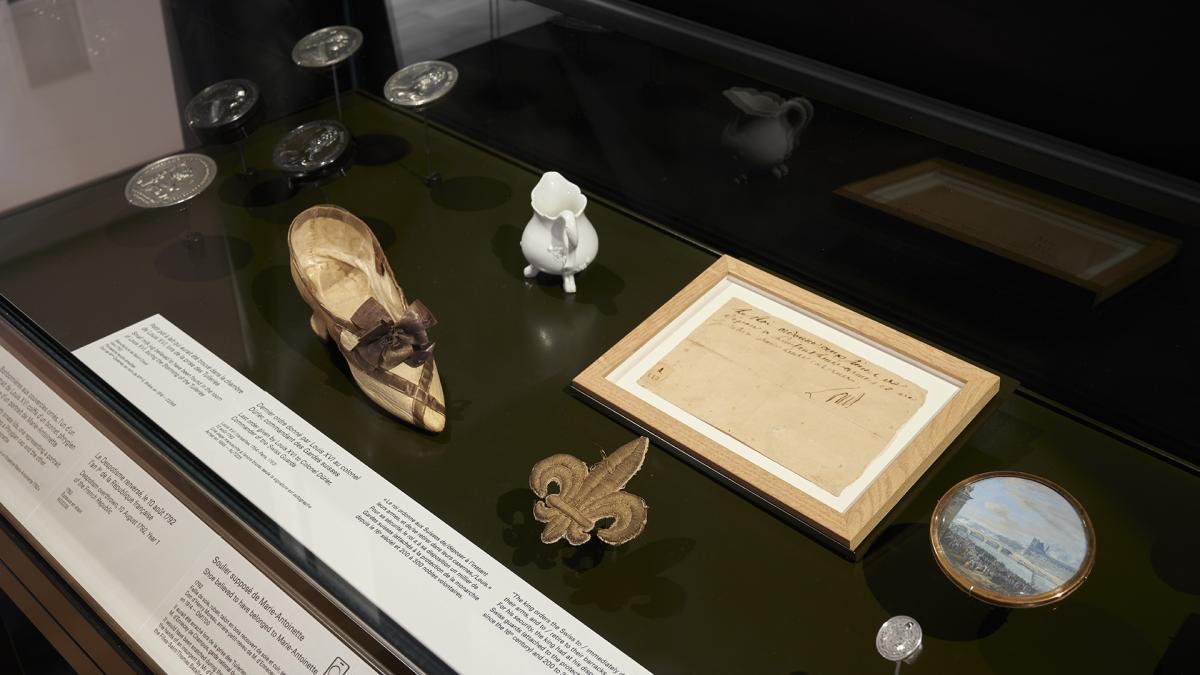
Start of the First Republic (1792-1795)
In this room dedicated to the great figures of the Convention, the portraits of three martyrs of the Revolution—Le Peletier de Saint-Fargeau, Marat and Chalier—face a display case containing a number of historical and memorial items that belonged to them, such as Charlotte Corday’s bonnet and the door handles from Marat’s bathroom (not to be missed).
The frontal portraits of Camille and Lucile Desmoulins, Danton, Robespierre, Saint-Just and Hérault de Seychelles are also shown with some of their personal items.
Visitors will also find a number of republican festivals depicted by the painter David, such as the Festival of the Supreme Being.
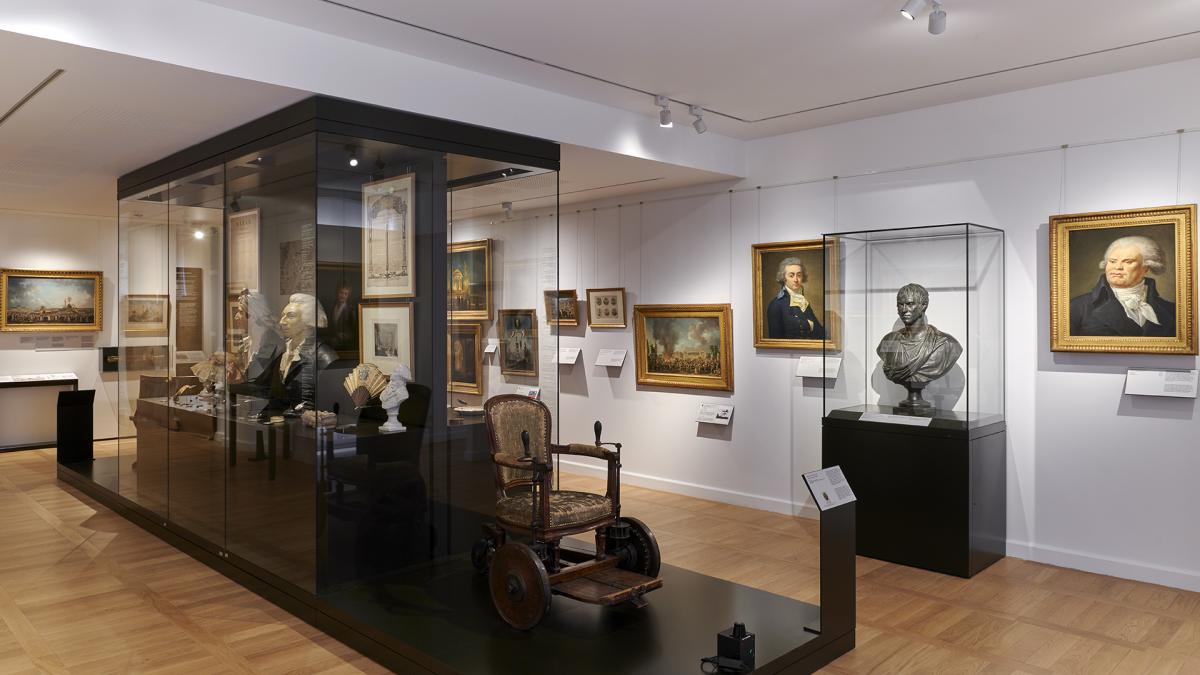
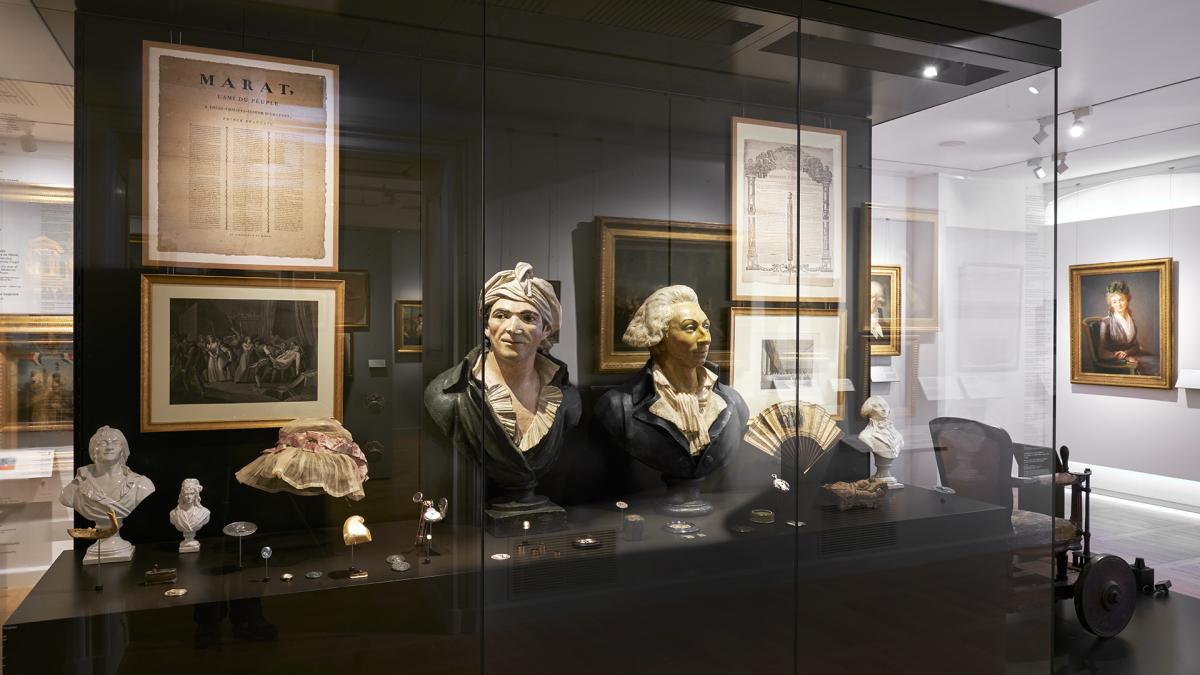
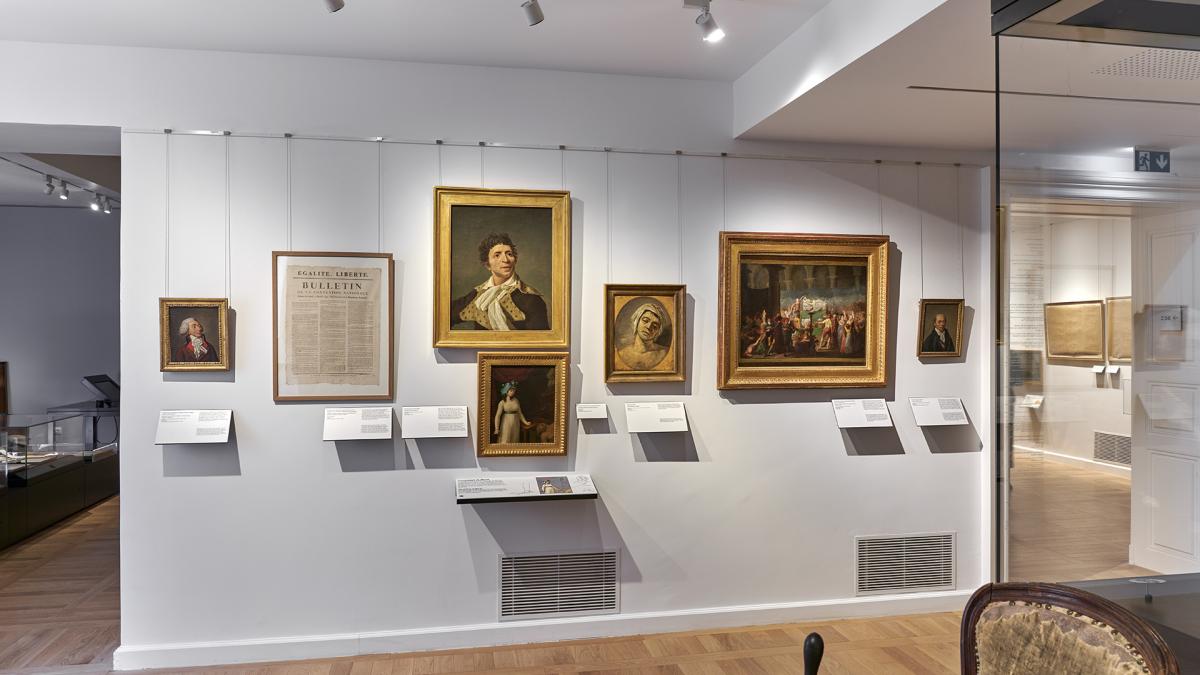
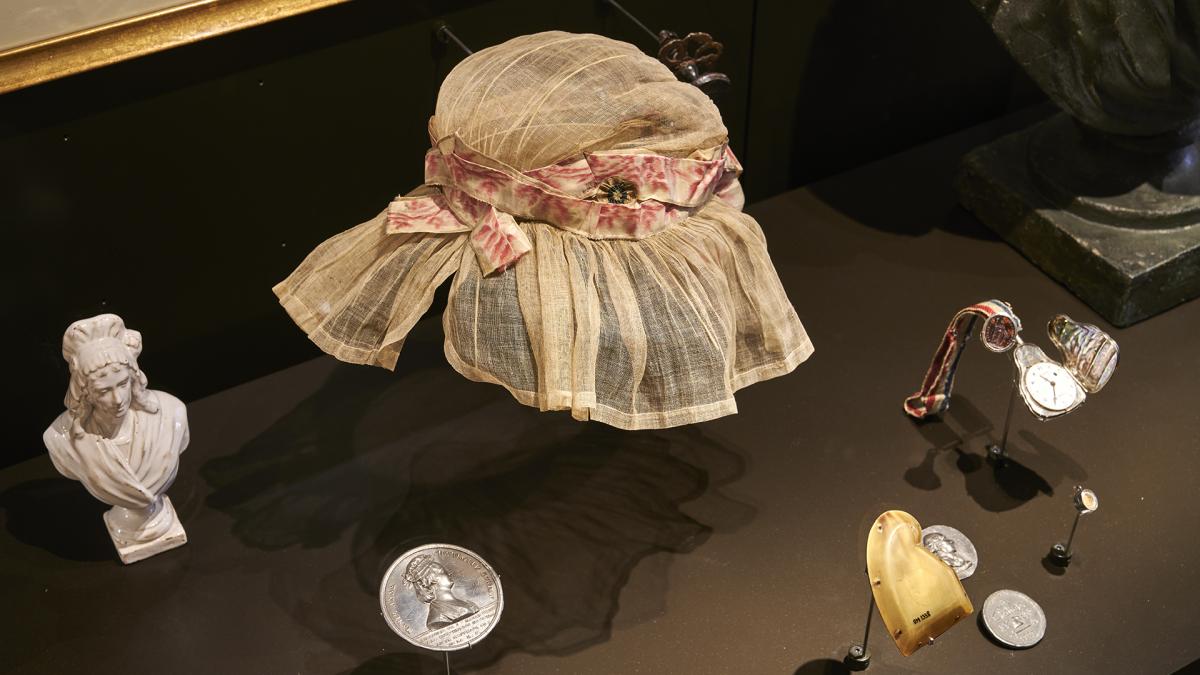
The Directory (1795-1799)
In this room, a first set of items focuses on political, administrative and financial life under the Directory. Founded by the Constitution of the Year III (August 22, 1795), this regime takes its name from the five directors who exercised executive power together. A second set of items focuses on a number of scientific and cultural institutions that had been newly created. Visitors will discover portraits of the chemist Jean-Antoine Chaptal and the composer Étienne-Nicolas Méhul.
The center of the room is occupied by a display case featuring the incroyables et merveilleuses (incredible and marvelous ones), who were young Parisians that had adopted an ostentatious lifestyle.
Finally, there is a focus on the role of Napoleon Bonaparte during these four years, during which his European conquests left their stamp on the Paris region.
Heritage of the French Revolution in the Museum’s Collections
Following the chronological pathway, this room aims to show the scope of the revolutionary heritage in iconography, memory and ideas. The display cases focus on exploring topics such as the secularization of place names, the republican calendar, the implementation of the full metric system and the symbolic and allegorical representations of the human rights, freedom and reason.
Napoléon Ier (règne 1804-1815) : rêves et modernisation d’une capitale
The portrait of Juliette Récamier opens this new section of the pathway that links the Consulate and the First Empire.
In the large central display case, a selection of works provides evidence of the very high quality of technical and artistic creation in master crafting and goldsmithing in Paris during the First Empire. A number of objets d’art and historical items, such as Napoleon’s field kit, are exceptional. Drawings, prints and decorative elements round out the display.
The second part provides examples that enable exploring Napoleon’s grand scheme for developing Paris, with the creation of new areas and symbolic buildings (including new passageways, columns and triumphal arches to honor military victories), as well as with public constructions based on civil engineering (channels, bridges, fountains, covered markets, etc.).
Napoleon I endowed the capital with an architecture that served a dual purpose: provide a setting for the imperial power and improve the quality of living of a population that, from 1801 to 1811, grew from 547,756 to 622,631 people.
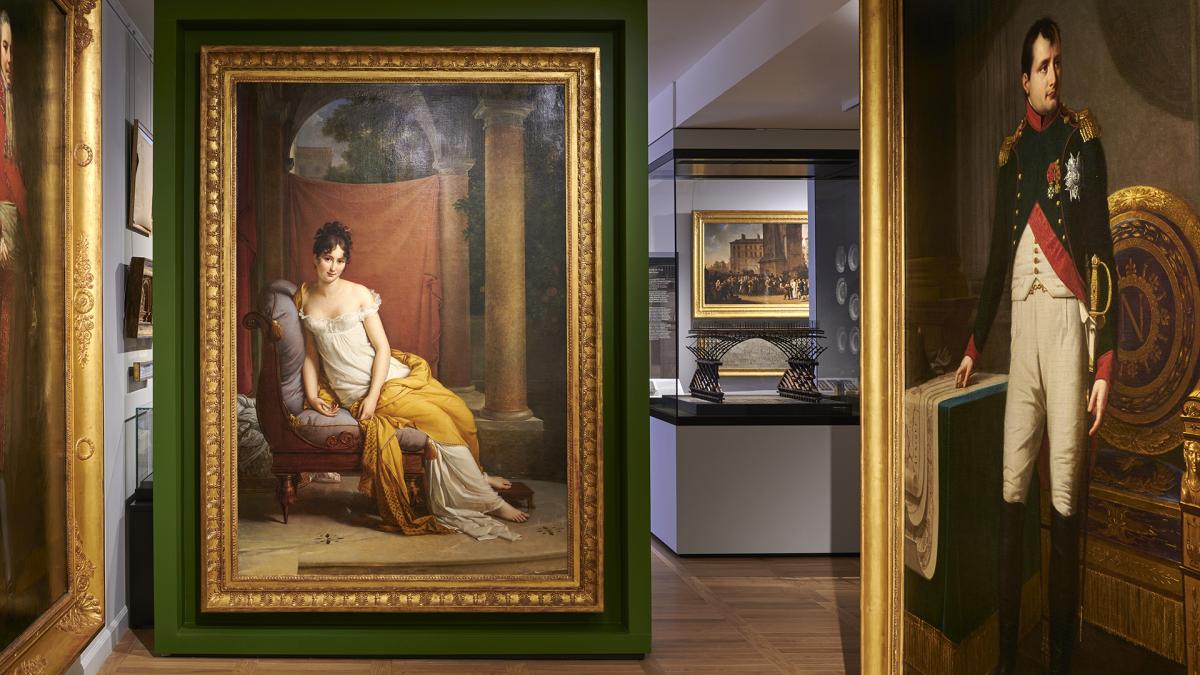
Restorations (1814-1830)
After the abdication of Napoleon I on April 6, 1814, Paris was occupied by a coalition of European allies. The Hundred Days War ended in 1815 with the defeat at Waterloo. This interlude came between two Restorations, which returned first Louis XVIII (1814-1824) and then Charles X (1824-1830) to the throne of France.
The pathway first presents the urban transformations carried out in the city and provides a special focus on the Galeries du Palais Royal, a newly fashionable district. This section highlights the painter Boilly, since the Carnavalet Museum has some of his most exceptional canvases. It also highlights the remarkable work of the Parisian cabinet maker and entrepreneur, Louis-François Puteaux.
Another area focuses on Parisian spectacles during this time. Here, visitors will find portraits of La Malibran, Mademoiselle Mars and the singer Béranger, along with opera glasses, a diadem from a stage costume, a cardholder and finely decorated boxes of candies, allowing them to plunge into the effervescence of the boulevards. At the Théâtre-Français or - Italien, at the Paris Opera or the Opéra Comique, authors, actors, singers, dancers and chansonniers are adulated.
1830 -Revolutionary Days
On July 27, 28 and 29, 1830, Paris was once again the theater of revolution. The main thrust behind these “Three Glorious Days” was the idea of freedom.
Through historical and memorial items, drawings, newspaper articles, paintings and an impressive scale model of City Hall, the pathway offers a day-by-day chronicle of this period. The year 1830 represents a major break in Paris history. From political actions to barricades and street fighting, from collective petitions to civil guards, emerged political ideas, myths and heroic figures that spread throughout Europe.
The July Monarchy (1830-1848)
The arrival of Louis-Philippe to City Hall marked the start of the July Monarchy. Political caricature developed, most notably with Daumier. The Carnavalet Museum possesses his easel, palette and brushes.
A large trans-chronological display case focuses on the triumphal axis that runs from Bastille to the Arc de Triomphe, featuring constructions that were built or developed under the July Monarchy. The July Column at Place de la Bastille was inaugurated in 1840, as were major projects like the Arc de Triomphe at Place de l’Étoile. The obelisk that had recently arrived from Luxor was installed at Place de la Concorde.
Paris, Capital of Romanticism
From 1830 on, Paris was buoyed by the spirit of freedom and revolution generated by the Three Glorious Days and became an intellectual and artistic melting pot. Here, visitors can see the portraits of writers Victor Hugo and Eugène Sue, as well as the Hungarian composer Franz Liszt (known as the “lion of the piano”) and his companion, the writer Marie d’Agoult. In the display cases, personal items such as Eugène Sue’s writing desk are found next to statuettes by the sculptor Dantan.
The 1848 Revolution (February 22-24 and June 23-25)
The pathway features a room dedicated to the 1848 Revolution, where the wealth of the museum’s collections enables an in-depth presentation of this event.
King Louis-Philippe’s writing desk occupies the platform in the center of the room. The marks resulting from an intrusion by revolutionaries on February 24, 1848, can still be seen on the desk. The display cases present a profusion of memorial objects that tell the story of the two periods of this revolution and include pipes caricaturing noted figures, a pistol, tokens, a four-pronged nail thrown during the riots, a powder jar from the insurrectionists at Faubourg Saint-Antoine and posters. They are echoed by portraits of well-known figures of the time, such as Alphonse de Lamartine, Alexandre Ledru-Rollin, François Arago and Edgar Quinet. Some of these personalities took the road to exile.
A final area focuses on the early days of photography, which was created in Paris. Works by pioneering photographers like Charles François Thibault, Gustave Le Gray, Henri Le Secq and Charles Nègre are on display. From now on, Paris and the epoch’s outstanding events will be photographed.
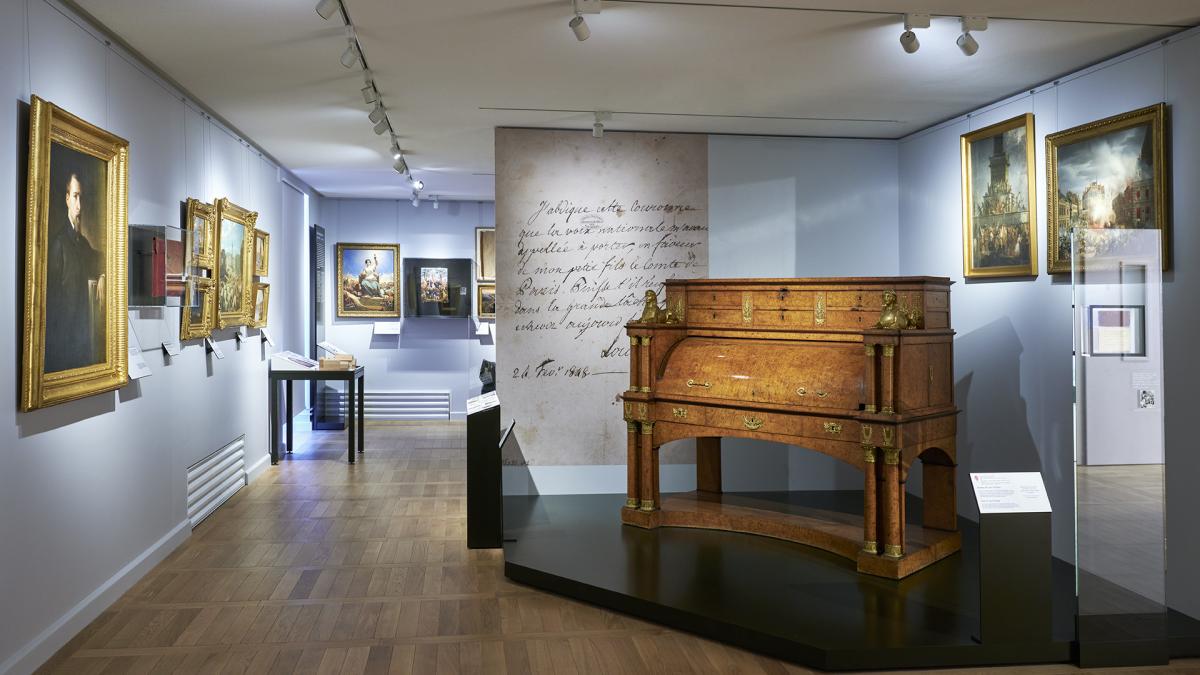
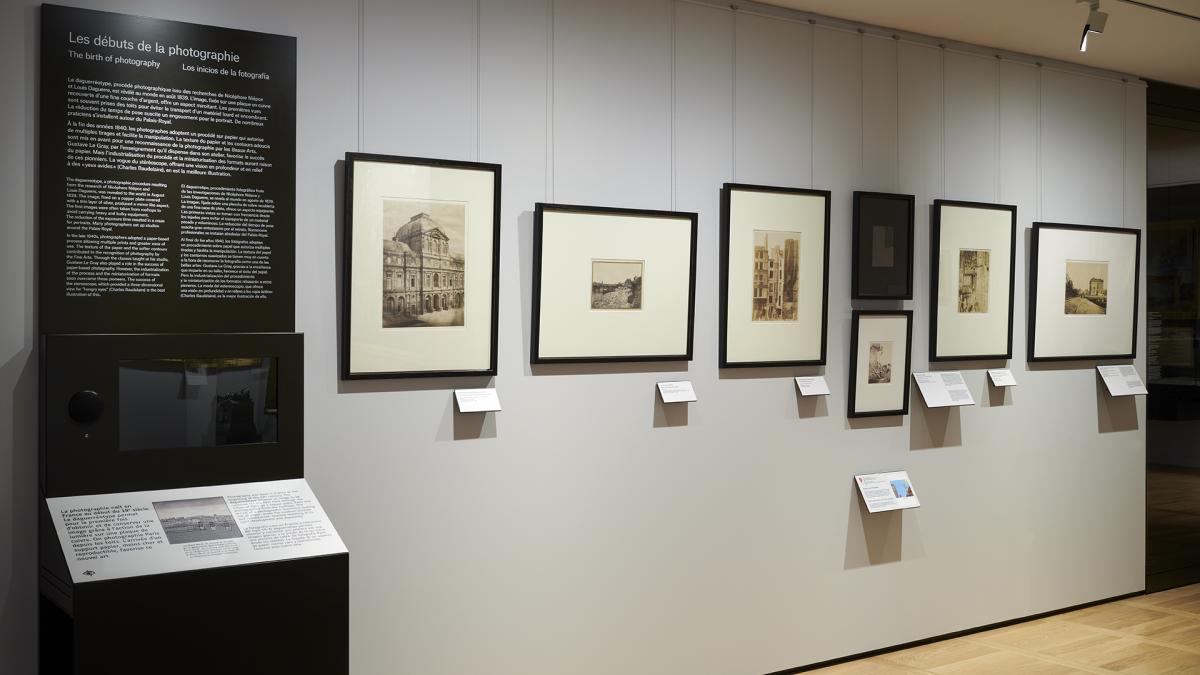
Level 1 - late 19th century, 20th and 21th centuries
Napoleon III and Haussmann: A Growing and Changing City
On December 2, 1852, Louis-Napoléon Bonaparte became emperor of the French under the name Napoleon III. At the time, the city of Paris had a population of one million people and was faced with major demographic and urban challenges. To transform it, Napoleon III named Georges Eugène Haussmann to the position of Prefect of the Seine on June 22, 1853. At the head of a remarkable administration, he launched extensive projects.
In this last part, the works presented bear witness to the emperor’s vision. Facing the portrait of Haussmann by Henri Lehmann is the large painting entitled, Napoleon III Hands Baron Haussmann the Decree Annexing the Parisian Suburban Communities, by Frédéric Yvon. A set of tokens commemorating the administrative decisions rounds out this important focus on the city’s transformation.
In a display case, the crib of the Imperial Prince Louis-Napoléon occupies the center of the area. Created by Victor Baltard and several other contemporary artists, it is an example of the excellence of Parisian decorative arts during this period.
The Haussmannian Transformations
The example chosen for this part is the construction of Avenue de l’Opéra, with photographs taken by Charles Marville and a painting by Félix Buhot. The Pythia by Marcello, which was donated to the museum by the couturier Worth, is an exceptional work. With the construction of performance venues and a renewal of the decorative arts, Paris brilliantly reaffirmed its position as the capital of the arts and spectacles.
In the center of the room inside a large display case, several items bear witness to these changes, such as the “New Paris Game”.
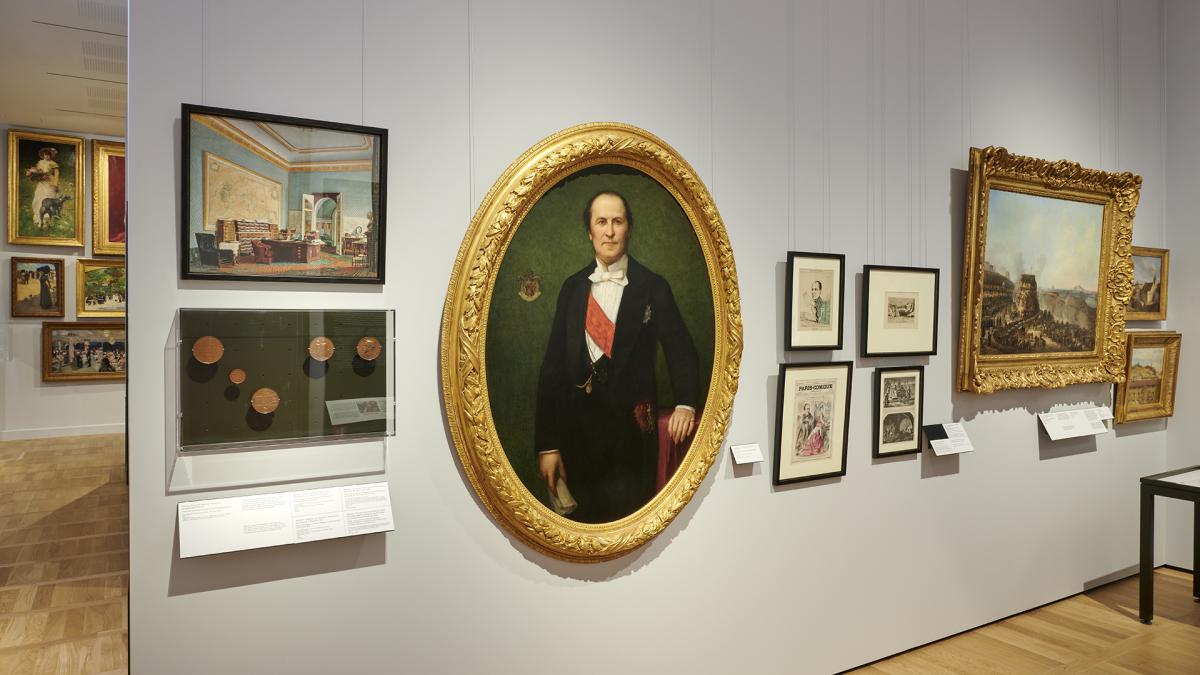
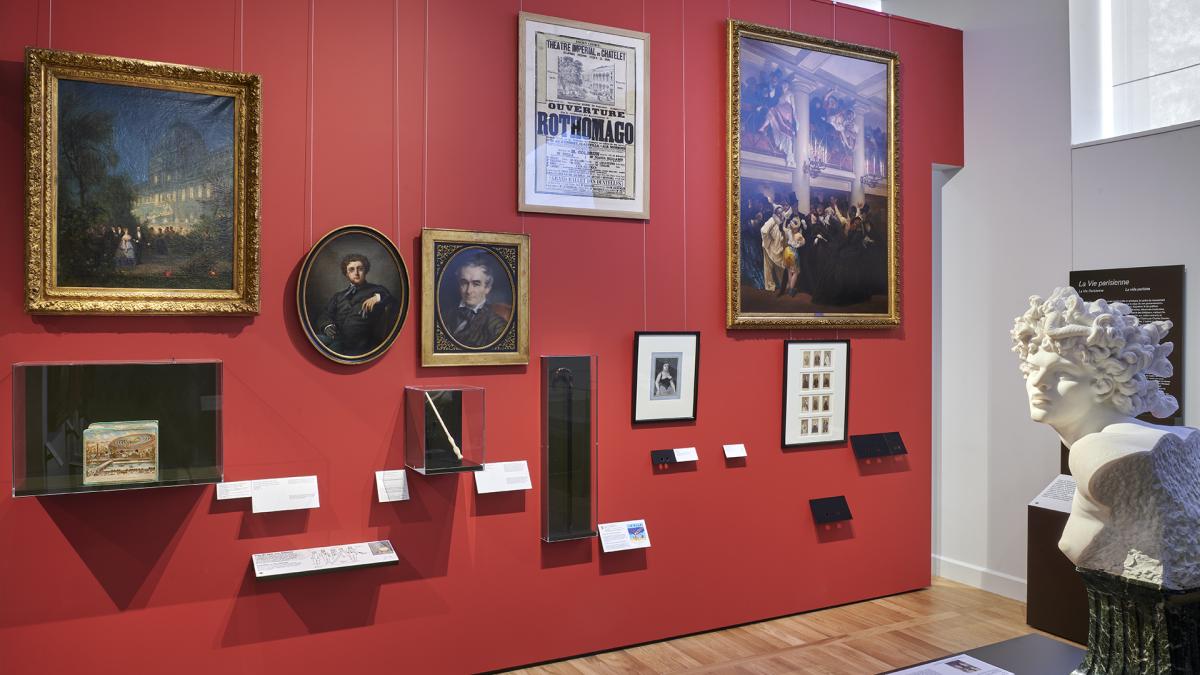
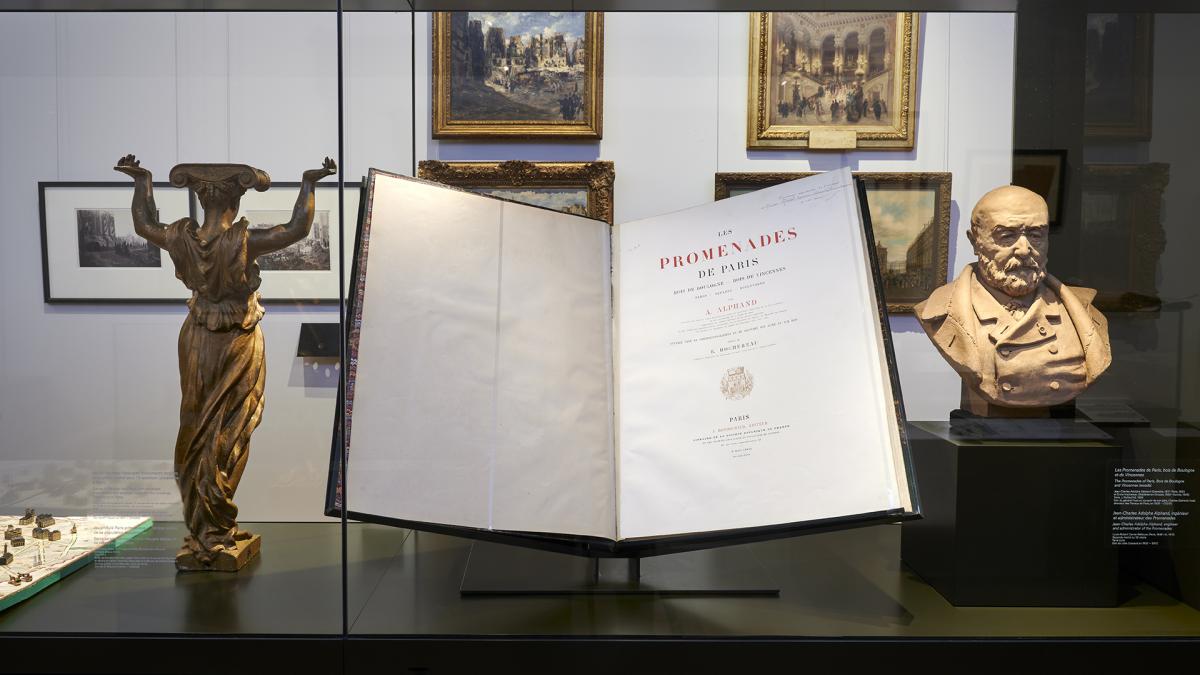
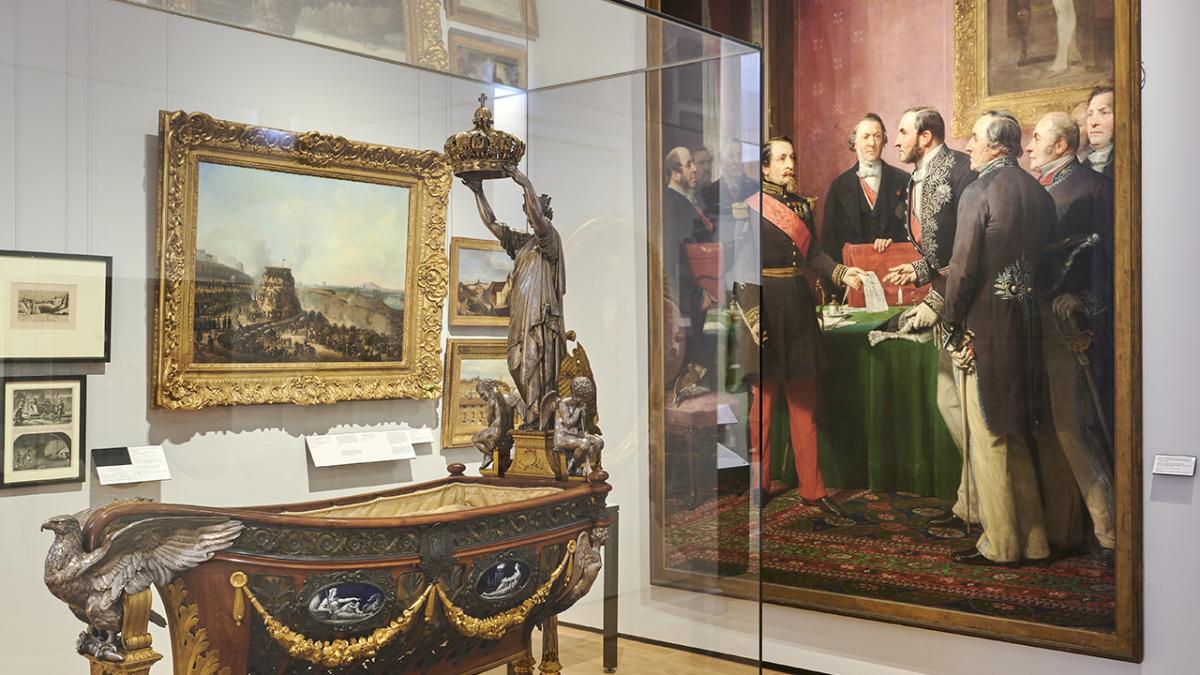
The Siege of Paris (September 18, 1870, to January 28, 1871)
On July 19, 1870, Napoleon III declared war on Germany. After a series of defeats, he surrendered on the second of September at Sedan. The German army surrounded Paris, which was able to communicate with the rest of the country only by balloon or carrier pigeon. Privations followed very quickly. In the poorest neighborhoods, the Paris population depended on municipal cafeterias for survival. The blockade was responsible for 40,000 deaths. Obliged to surrender, France signed an armistice on January 28, 1871.
This room tells the story of the daily life of Parisians under siege through a diverse collection of items, including a mortar shell, a carrier pigeon’s feather, a boule de Moulins in zinc for delivering letters, commemorative dishware and tokens, menus, photographs and paintings showing the destruction caused by bombing, the lines outside grocery stores because of rationing and a rat seller, since there was no other meat.
The 72 Days of the Paris Commune (March 18 to May 28, 1871)
Since the people of Paris did not accept the French defeat, they emancipated themselves from executive power and proclaimed the Paris Commune on March 28. This first experiment in communal self-government lasted 72 days, until the army offensive to retake Paris between May 21 and 28, 1871.
The major figures of the period—politicians and journalists—are presented, including Jules Vallès, Séverine, Louise Micheland Auguste Blanqui, along with the sculpted bust of Henri Rochefort.
In the display cases, a selection of historical and memorial items rounds out the presentation, with the bachelor’s degree and red sash of the mayor of the 15th arrondissement belonging to Jules Vallès; snuffboxes and matches with the slogan “Long Live the Commune”; and a fragment from the Communards’ flag. The destruction of the Vendôme Column (drawing and scale model) is associated with Gustave Courbet (photo), who painted the portrait of Jules Vallès that is one of the Carnavalet Museum’s masterpieces.
The section ends with the tragic episode of the Blood-Soaked Week (May 21-28, 1871), when 7,000 to 10,000 people died. The Communards set fire to a number of public buildings, such as City Hall, on May 23 and 24. Paintings, photographs and memorial items bear witness to these terrible days for Paris and its inhabitants.
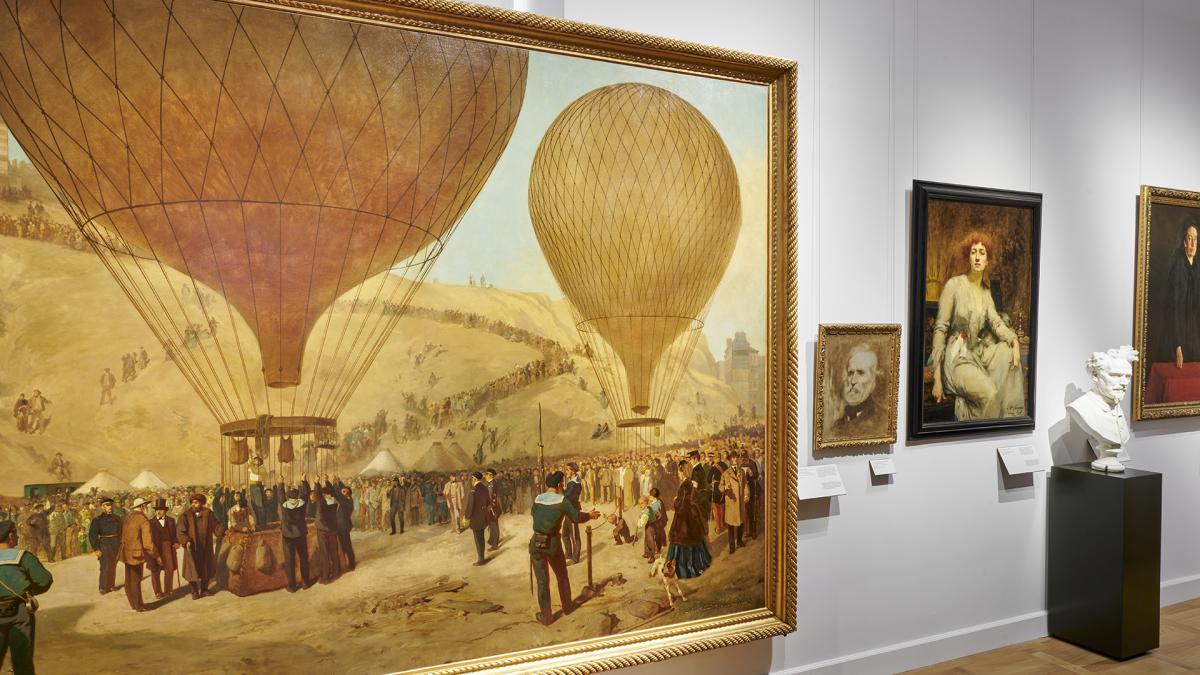
The Third Republic and Paris
The Third Republic is still visible in Paris today, through the schools, the Sorbonne University and numerous monuments and statues paying tribute to the new republican regime, to the French Republic and to freedom. There is a special focus on Victor Hugo’s state funeral and his interment in the Pantheon. Commemorative plates, engravings, newspaper articles and photographs of the cortege enable visitors to experience the immense popular emotion that characterized this moment.
However, anti-republican sentiment had begun to arise. A drawer display case is dedicated to General Boulanger, with a surprising collection of pipes and other items with his effigy from the Carnavalet Museum collections.
Montmartre
In this room, the pathway provides a thematic focus on Montmartre in the years between 1875 and 1914. Still a very rustic area, the butte attracted poets, chansonniers, writers, painters, illustrators and musicians. They enjoyed the many lively dance halls, cabarets and cafés found along Barbès, Rochechouart and Clichy boulevards around Place Pigalle and Place Blanche. These venues had picturesque names like Le Chat Noir (The Black Cat) or Le Rat Mort (The Dead Rat).
A set of works related to the universal exhibitions of 1878, 1889 and 1900 are presented together for the first time.
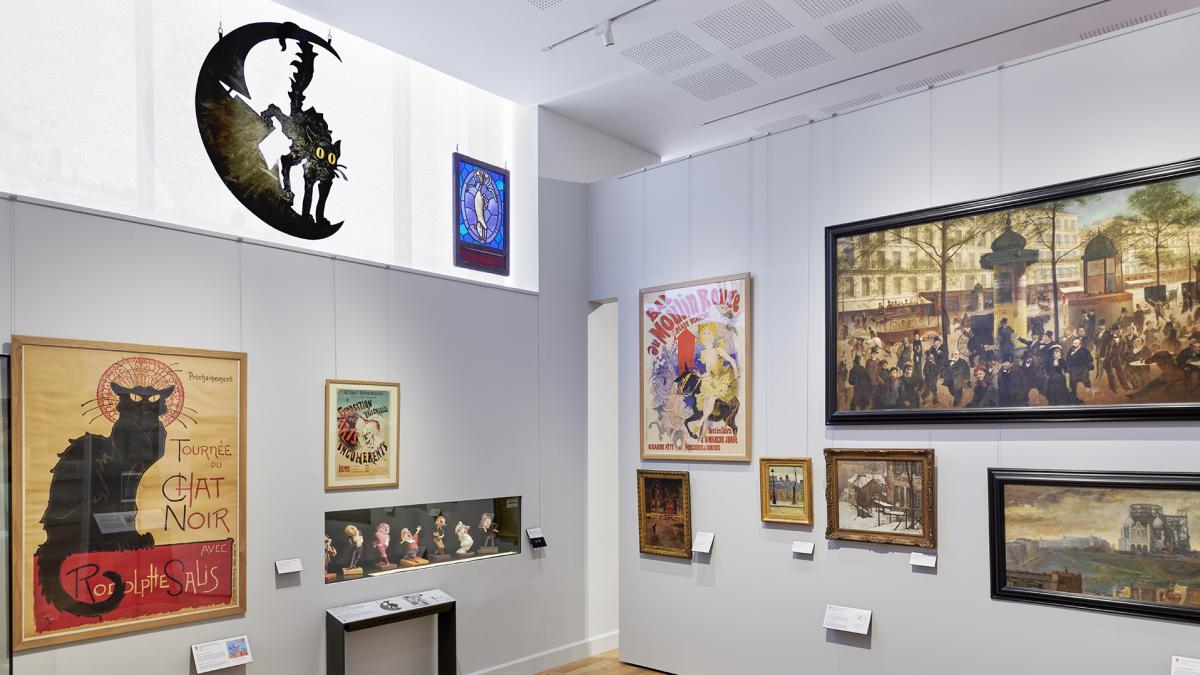
“Belle Epoque” Paris
Designating a turning point between the late 19th and early 20th centuries, in the midst of a period shaken by fierce social tension, the “Belle Epoque” (as it was later named) appears as an enchanted interlude, with Paris as its stage.
Hung together in one setting, over 40 paintings donated by Mr. and Mrs. Seligmann—including works by Jean Béraud, Henri Gervex and Louise Abbéma—offer a vivid chronicle of Parisian sociability. They allow visitors to stroll along city streets and stop at grand cafés, go from Paris parks to fashionable evenings, see portraits of actresses and glimpse subdued interiors.
The next two rooms present decorations from the Café de Paris, a renowned restaurant located at 41 Avenue de l’Opéra (made by Henri Sauvage and Louis Majorelle) and from the Fouquet jewelry store (made in 1901 by the artist Alfons Mucha). They represent the full flowering of the Art Nouveau style, which conveyed a taste for asymmetry and featured a “whiplash” line; the style invaded architecture and the decorative arts.
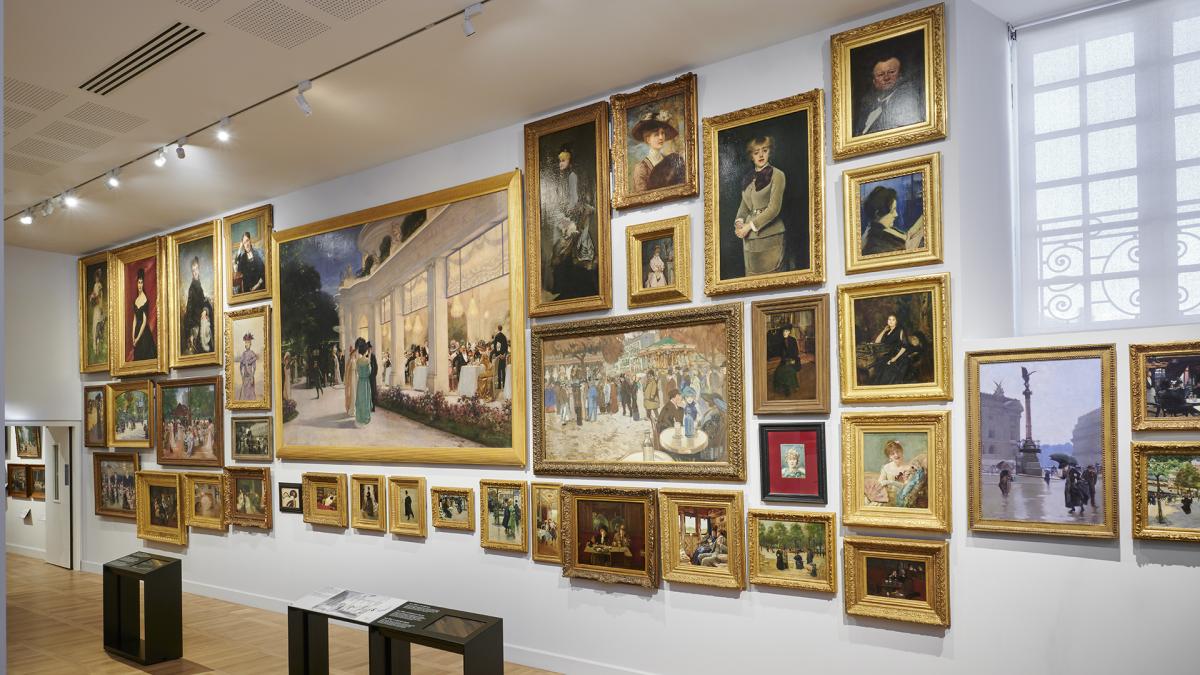
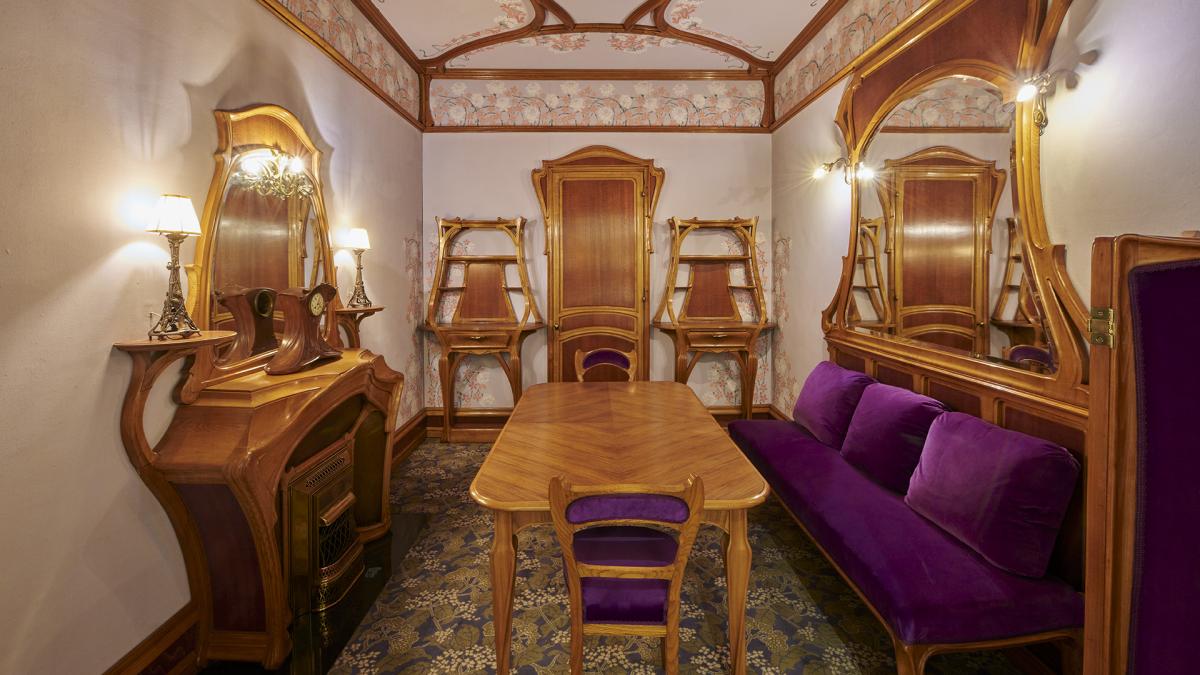
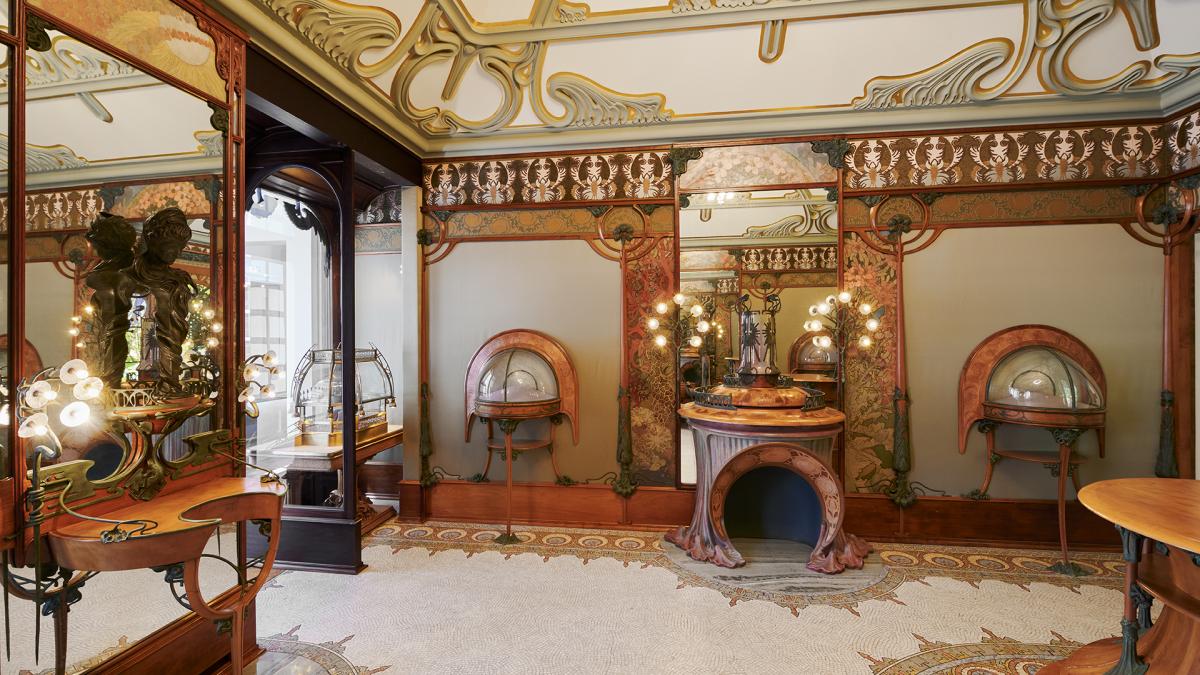
Marcel Proust (1871-1922)
The furniture and items belonging to Marcel Proust that are found in this room come from the three Parisian homes that the writer occupied successively after his mother’s death.
According to his governess, Céleste Albaret, most of the furniture presented on the platform in this room comes from his last bedroom on Rue de l’Amiral Hamelin. There is a simple bed, a screen, a bedside table, an armchair and a chaise longue. Since he was asthmatic, Marcel Proust remained ever more frequently inside his room. Sleeping in the daytime and working at night, the writer composed the major part of In Search of Lost Time in this simple brass bed.
Protected from noise by cork tiles on the ceiling and walls, one of which is shown in the display case, and from pollen by windows that were caulked in the spring and fall, Proust dedicated the last fifteen years of his life to creating a major literary work, which he had begun in 1908.
His personal belongings are presented in two display cases and include a long, toiletry items, writing materials and a cane.
Two digital installations round out this area. One is a projection of photos by Paul Nadar of people close to the author, and the other is a listening bench with excerpts from In Search of Lost Time and the music of Reynaldo Hahn.
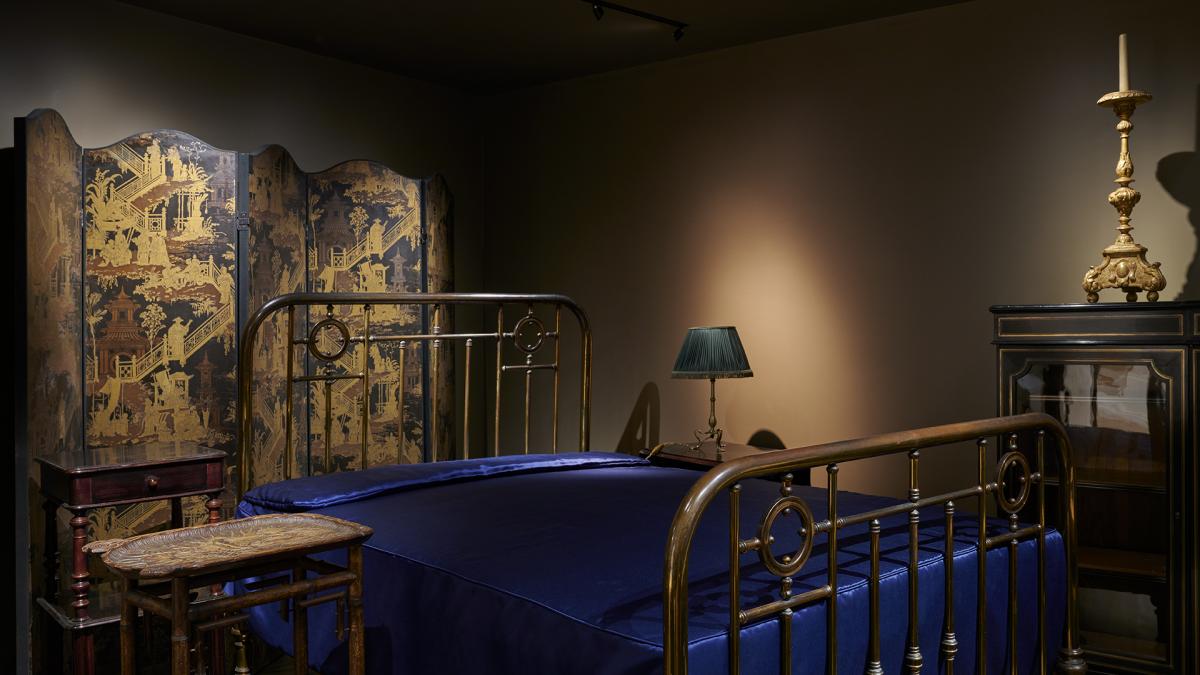
Paris, from 1910 to 1977
In the early 20th century, Paris underwent major restructuring. To illustrate this, a set of old scale models of the former districts of Paris is presented at the start of the section. Some of these neighborhoods correspond to insalubrious areas that are densely populated and scheduled for demolition. There is a special focus on the “Zone” near the former city walls, where painters, engravers and photographers show the precariousness of living conditions.
Facing this, a wall is dedicated to World War I. In a display case, the daily life of Parisians is conveyed through photographs and a number of personal items, such as ration cards or children’s drawings.
In the period between the wars, the districts of Montmartre, Pigalle, the Champs Elysées and Montparnasse built their legend. Paris, the international capital of the arts, the avant-garde, lifestyle freedom and literature, is evoked with a series of portraits of major figures like Elisabeth de Gramont, Natalie Clifford-Barney and Gertrude Stein. Stein’s desk occupies the center of the room.
The story of World War II is told through the role played by the Carnavalet Museum, since its director at the time was a resistance fighter.
The pathway continues with a focus on the urban operations and the building (or planning) of roadways that were launched in the nineteen-sixties and seventies. They changed the face of the capital, and the touristic myth of Paris flourished in songs, films and popular novels.
A series of posters and photographs shines a light on the worker and student revolts that led to mass demonstrations in 1961, 1962 and 1968.
This section ends with the restoration of the election of a mayor to head the capital.
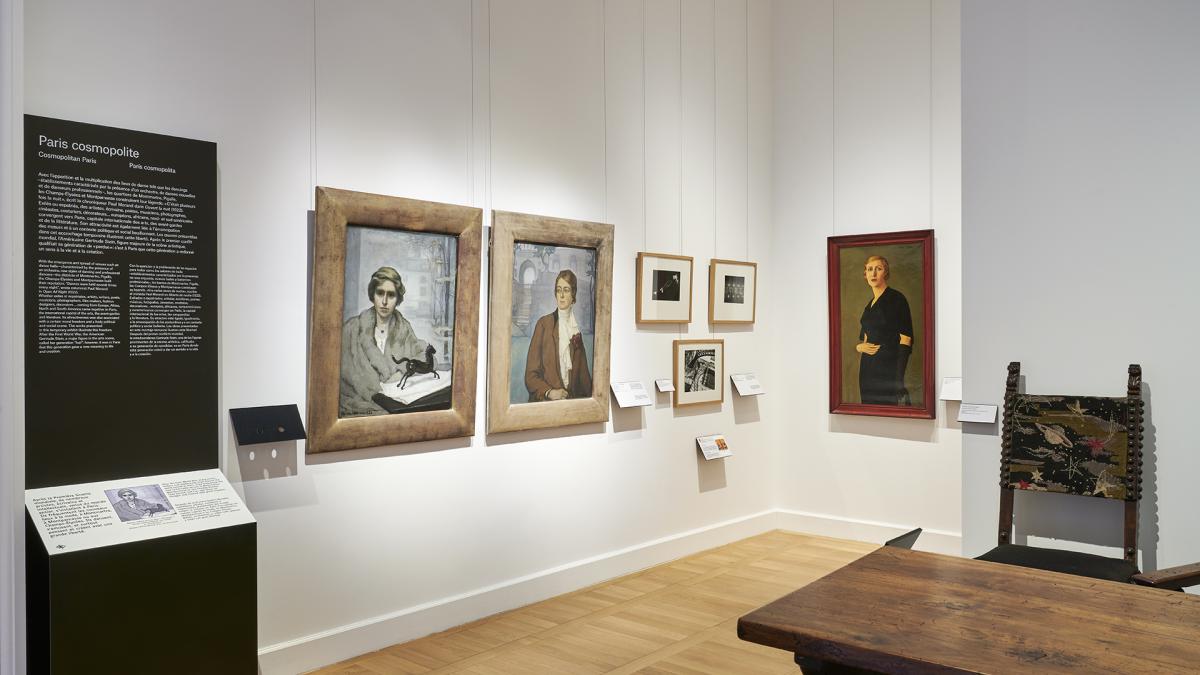
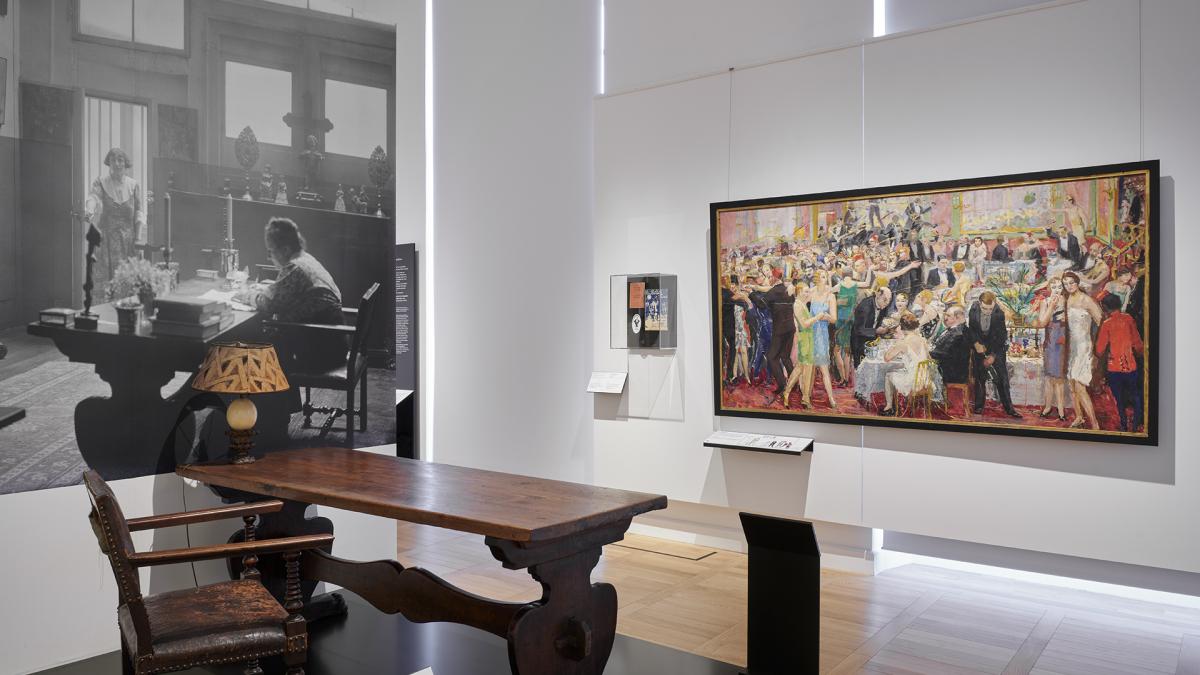
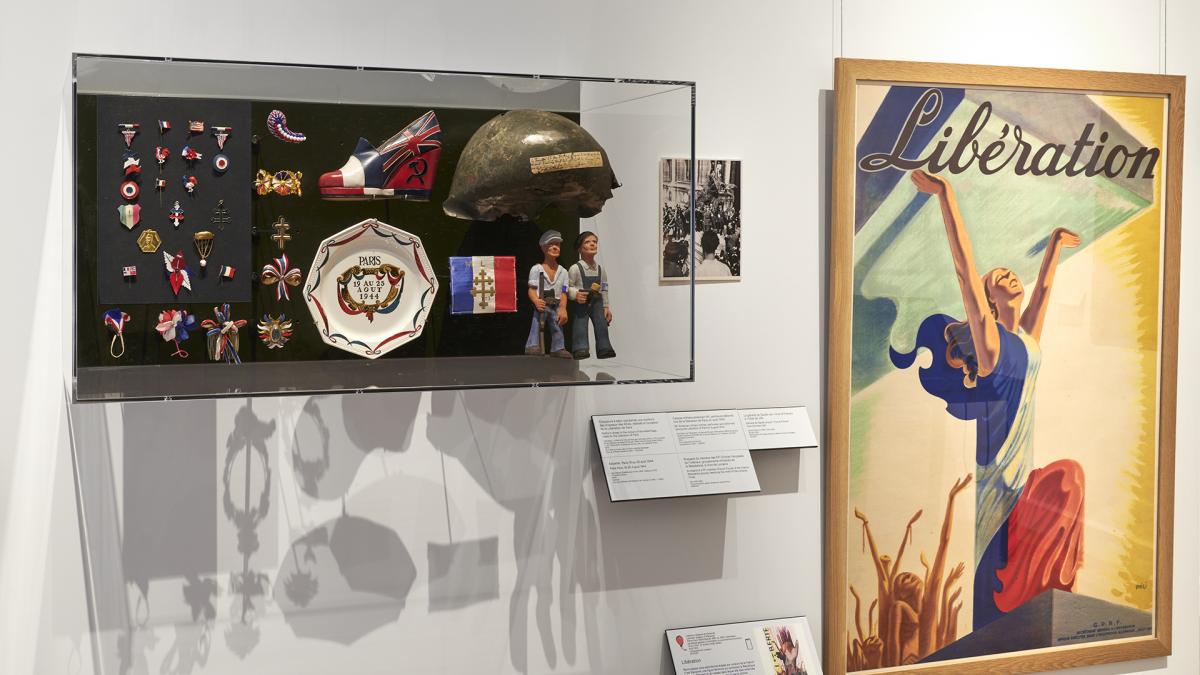
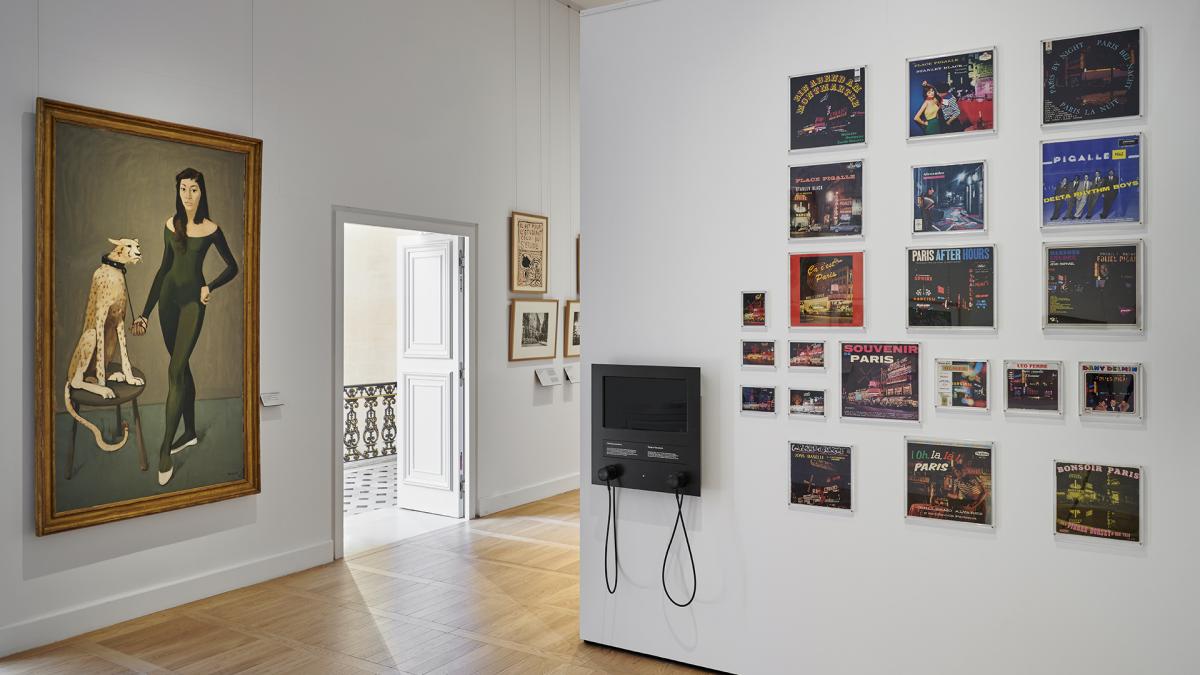
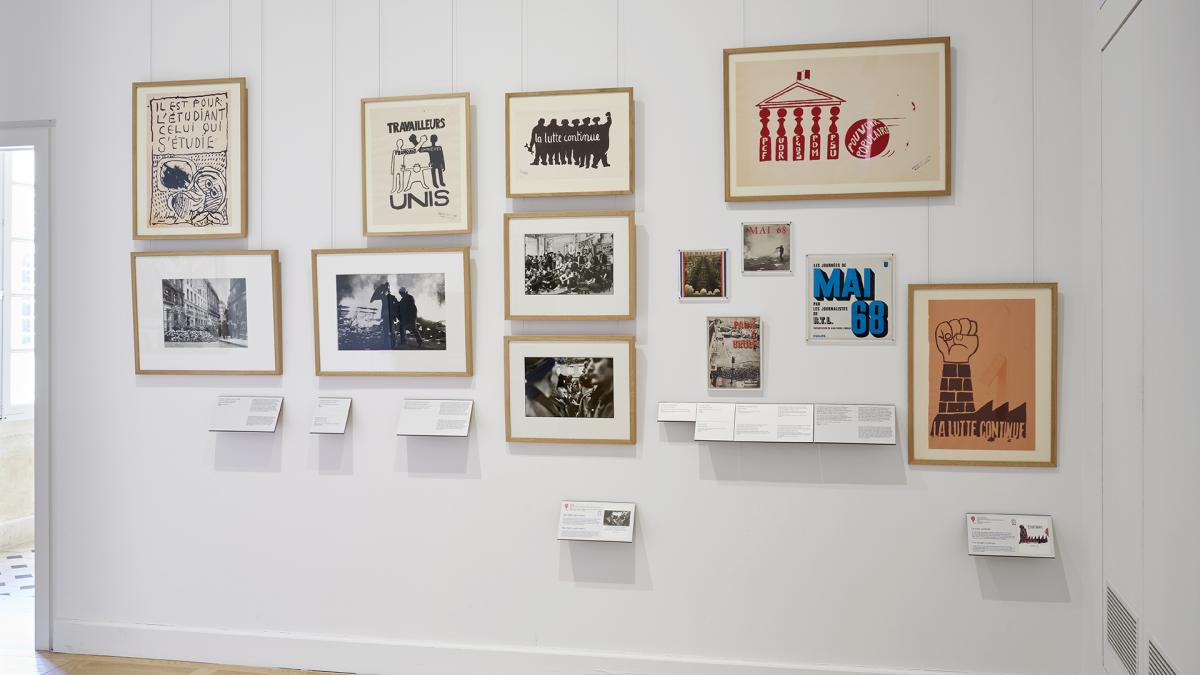
Paris, from 1977 to the Present
In this final section of the pathway, several themes are developed: climate and environment (with the COP 21 hammer and a smaller version of the Earth Crisis Globe – COP21 by Shepard Fairey, known as “Obey”), architectural and urban evolution, the transformations at Place de la République and housing in priority neighborhoods.
A selection of items and photographs conveys the great collective emotion generated by the terrorist attacks of 2015, the fire at Notre Dame Cathedral in 2019 and the Covid-19 pandemic that appeared in 2020.
Here, visitors will find photographs by the artists Thierry Cohen, Madeleine Vionnet, Patrick Tourneboeuf and Laurence Geai.
The pathway ends with the projection of a short film, Périphérie by Manon Ott (2020).
Outside the Pathway: the Wendel Ballroom
Installed in the museum in 1989, this spectacular ballroom from the Sourdeval-Demachy mansion was commissioned to the painter José-Maria Sert by Maurice de Wendel, the great steelmaker from Lorrain, around 1925. Its restoration revealed the very special technique used by the painter. He applied up to three successive coats of glaze, which he rubbed with a cloth and highlighted with metal powder, to a thin sheet of electrum (an alloy of gold and silver), giving the work luminosity and transparency.
